Last January, I met a Winnipeg author named Daria Salamon at a hostel in Salento, Colombia. Daria was at the tail end of a one-year backpacking trip with her husband and two school-aged children. They had already explored three continents together and she was documenting their journey on her blog (Daria Salamon). As we chatted about our travels, she mentioned that her family saw pink dolphins in the Amazon Basin. I thought I misheard what she said.
“Did you say you saw pink dolphins?” I asked.
“Yeah, pink dolphins,” she replied. “Well, actually they’re kind of pinky-grey. They swim in the rivers of the Amazon Basin.”
Whaaaat?! Pink dolphins swimming in rivers? Now, this I had to see. I pulled out my iPhone to jot down notes as Daria spoke: “Pink dolphins. In Bolivia. Go to Rurrenabaque. Take pampas tour. Cheap.”
Gregor was working behind his computer when I came back to the van waving my phone. “Guess what!” I said, “We’re gonna see pink dolphins in Bolivia!”
The Bolivian Amazon and Pink Dolphins
Before we started our Latin American road trip, I thought that the Amazon was all rainforest and that it was only accessable from Brazil. The Amazon Basin is actually a region of swamp, savannah, and tropical rainforest that extends to Bolivia, Brazil, Colombia, Ecuador, Guyana, Peru, Suriname and Venezuela. The Amazon River and its tributaries drain fresh water from the Andes mountains to the Atlantic Ocean, sustaining thousands of species of exotic animals such as jaguars, toucans, hummingbirds, tree frogs, anacondas, and piranhas.
Fun fact: One-third of Bolivia’s land mass is in the Amazon Basin.
The Bolivian Amazon is often called the Bení, named after one of the rivers that connects to the famous Río Amazon. The Bení has rainforest canopies where you can see jaguars and toucans and tree frogs, but it also has watery plains or pampas where you can find many animals that you won’t see in the rainforest. Like pink dolphins, for example.
The Amazon river dolphin (also known as the Boto dolphin) has pink or mottled pink/grey skin. Scientists don’t really know why these dolphins live in rivers instead of oceans, but they do know why they are pink. Their skin is thin and the blood vessels running underneath their skin imparts a pink colour. The younger dolphins are more grey because their skin is thicker. The older ones are more pink because their skin gets abraded over time. Some have a mottled pink/grey colour depending on location and temperature.
Like other animals in the Amazon Basin, the pink river dolphin is threatened by depleting food sources and shrinking water habitat. These are largely caused by human activities such as commercial fishing, cattle ranching, and oil exploration. If this keeps going, one day there may be no pink dolphins. And that’s why I needed to see them.
Fast Forward to Lake Titicaca…
Six months after meeting Daria, we were finally in Bolivia. We had just visited the great Lake Titicaca, which was one of the items on my Bolivian bucket list. At the top of that list was seeing pink dolphins. To do this, we needed to drive to La Paz city and then head northward to the town of Rurrenabaque, the launching point for guided excursions in the Amazon Basin.
Just outside of La Paz is a town called Mallasa, where a Swiss expat named Walter built a hotel-restaurant called Hotel Oberland. The hotel had a gated parking lot equipped with toilets and showers, which served as a secure campsite for overlanders like us. We decided to camp there for a few days so that Gregor could work with access to Internet.
When we arrived, we were pleased to find a few familiar faces. First, there was Fabian and Julia, a German couple traveling with their dog, Lucy. We had first met them in Huanchaco, Peru, and they were driving southward to Argentina in a big Toyota truck camper. Then there was Ben from New Mexico and his dog, Lorenzo. We first met them in Cusco, Peru, and he was driving towards Argentina in a VW Westfalia van.
All of us caught up over a dinner at Hotel Oberland’s restaurant, where they served ice-cold Huari beers and a delicious mixed grill plate that Gregor and I ended up ordering for three nights in a row because it was so yummy.
Fabian and Julia told us that they decided to skip the Amazon Basin because they didn’t want to risk contracting Zika, the mosquito-borne illness that is known to cause deformation in newborn children. On top of that, the road between La Paz and Rurrenabaque is infamously terrible due to poorly maintained sections and intermittent construction. The worst part is a 230-km stretch between the towns of Coroico and Yucumo, where the gravel road contains dangerously narrow, winding sections with no guardrails to prevent you from plummeting to the valley below. Despite the bad road conditions, Ben and Gregor (the ever optimistic VW Westy owners) decided that our two-wheel-drive vans could easily handle the trip to Rurrenabaque (“Rurre” for short).
Before we left Hotel Oberland, Walter (the hotel owner) warned us of a road closure on the way to Rurre. Between the towns of Quiquibey and Yucumo, the road is closed every day between 8:00 am and 5:00 pm due to road construction. Walter wrote down the info on a piece of paper for us, and re-iterated: “You can drive that road before 8:00 am and after 5:00 pm, but you can’t pass through any time in between”. We thanked him for the insider info and timed our trip accordingly.
Ben went to Rurre a couple of days ahead of us. When he arrived, he emailed us a detailed report saying that the road was “a bit sketch” and “a little slide-y at times”, but he basically made it through without too much trouble. Based on Ben’s not-good-but-not-bad report, we followed suit.
The Worst Road. EVER.
The highway that climbed out of La Paz and into the mountains started out nicely paved and even had decent guardrails:
After passing through a non-descript town, we saw a sign instructing us to drive on the left side of the road:
We didn’t see any apparent reason for driving on the left side. There was no construction, and there were no uniformed highway officials around to direct us. Just one sign.
Gregor nervously steered Lucky to the left traffic lane and told me to look out for anything suggesting that we were on the wrong side. It felt like an eternity before we saw any other vehicles – like waiting for a time bomb to go off. As we approached a corner, both of us yelped when saw the front end of a car coming in our direction. Our split-second thoughts:
Is he in our lane?
Does he see us in this lane?
Why the hell are we in this lane, anyway?
Apparently, the oncoming traffic also had to stay left, and we were totally relieved.
Gregor had just started to warm up to the left-hand driving when the pavement turned to gravel. The potholes were horrendous. Some were like a mine field of small potholes and others were like massive sinkholes. The ones filled with puddles were especially heinous because you couldn’t see how deep they were. Negotiating those puddles with oncoming traffic was even more heinous, especially when the road narrowed. Thankfully, Bolivian drivers in these parts were fairly careful and rather courteous.
We had driven on many gravel roads, but this was the first time we had encountered so many sub-species of gravel in one road. There was pea gravel, rocky gravel, and muddy gravel. There was also hard-packed gravel, mushy gravel, washboard gravel, and rutted gravel. Then there were exciting hybrids such as “muddy rutted slide-and-fishtail” gravel, and “hard-packed rock-infested axle-destroying” gravel.
The road was randomly sprinkled with short paved sections that rose abruptly from the gravel bed, forcing Gregor to slow down and accelerate in bursty fits over several kilometres. The van lurched forward and backward at the start and end of the pavement and swayed from side to side as we negotiated the curves. Dramamine was my best friend that day.
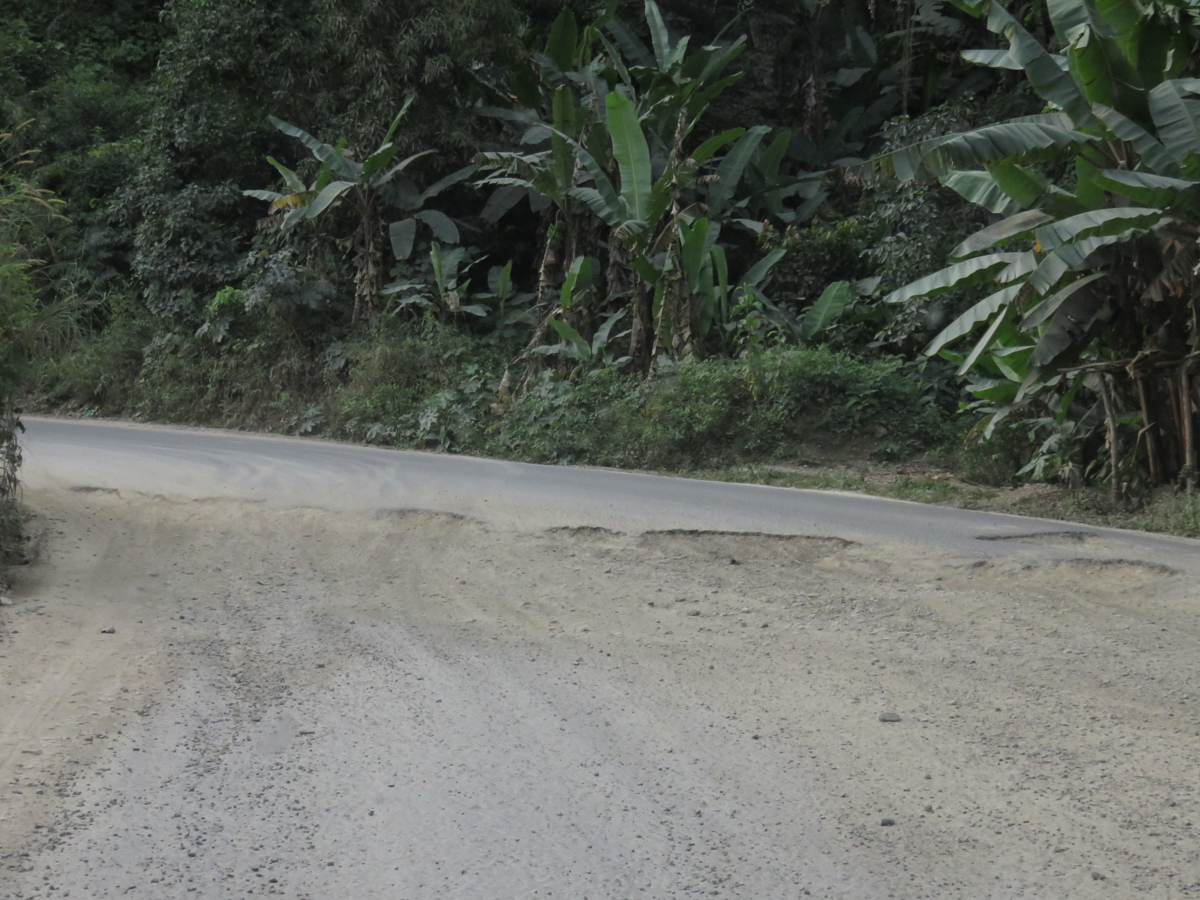
As we gained elevation, we drove straight into dense fog:
The moisture in the air had turned the road into a slimy, muddy mess and we slowed down to a crawl. Gregor was so tense that his shoulders and jaw were hurting. This couldn’t get any worse, we thought. And then we saw a huge pile of dirt in our lane:
Gregor yelled out “What the f***!” and swerved right to avoid the dirt pile, only to see another pile directly in front of us. He swerved back to the left, and for several kilometres we slalomed through piles of dirt that appeared to be intentionally placed there for future road maintenance. With no shoulders or pull-offs to safely park, we had no choice but to keep driving. It was 6:00 pm and it was getting dark.
This was only the second time in our trip that we had driven in Latin America in the dark (the first was in Nicaragua, after a late border crossing). We don’t like driving at night for safety reasons. I don’t think we could have chosen more unsafe driving conditions. Gregor took it slow and steady, barely exceeding 20 km/h.
At 7:00 pm, we finally stopped at a town called “Km 62”. It was basically a glorified truck stop. The town was about two blocks long and was lined with little family restaurants, junk food kiosks, and pay-to-use bathroom facilities geared for truckers (i.e., the bathrooms were disgusting). We parked Lucky among the big rigs and celebrated our safe arrival by sharing a litre of beer at one of the restaurants. Gregor drank a little extra to calm his nerves.
It took us 7 hours to drive 220 km that day. Completely exhausted, we fell to sleep with the sound of diesel engines humming around us. We have slept at many truck stops on our road trips over the years, and the sound of idling engines always makes us feel safe.
The Final Stretch to Rurre
The next morning, we woke up at 5:00 am so that we could make it past the 8:00 am road closure that Walter warned us about. At 7:00 am we arrived at Quiquibey to find a swing-arm gate blocking our path. Our hearts sank when we translated the road closure sign:
The road closed at 6:00 am, not 8:00 am! I looked again at the piece of paper with Walter’s scribbles. It said: “Road closed 8:00 to 5:00”. How could this be? Ben said he made it through without any issues, and Walter said he takes this route all the time. And then I remembered…Ben drove through this section at night. And Walter mentioned that he always drives to Rurre at night. No need to memorize the morning closure time.
We missed the closure by only an hour. I pleaded with the road worker at the gate, asking if we could pass through during a construction break. He wore the gate key around his neck like a big shot, and did not hesitate to exert his full power. “You can ask the roadwork manager when he comes in an hour,” he said firmly. Well, the manager never came.
I suggested to Gregor that we just go back to La Paz and skip the pink dolphins, but he insisted that we continue. So we sat and waited. For 10 hours.
With no Internet access and nowhere else to go, we made the best of our time by reading, napping, watching movies, and occasionally stepping out in the rain for a pee.
At 5:00 pm on the button, the big shot road worker pulled the key from his neck and opened the gate. The construction zone was only about 40 km, but it took us 1.5 hours to drive it. After that, it was 1.5 hours of silky smooth asphalt to Rurrenabaque. We camped at a place called El Mirador, where Ben parked his van while he went on a jungle trip. Had he been there, we would have told him that his road report totally sandbagged us.
A Much Needed Break
The plan for the day was to find a two-day pampas tour that offered an opportunity to see pink dolphins. As we sipped our morning coffee, Gregor announced that he didn’t want to go on the tour. In fact, he was never really interested in seeing pink dolphins – he basically drove all this way just for me. Gregor’s selfless act was very sweet, but it also came with a tinge of bitterness: the time and energy that he sacrificed to get here had depleted his personal stores, and he needed some time alone to rejuvenate. He encouraged me to go on the tour by myself.
After 18 months of traveling and being together almost 24/7, Gregor and I were going to spend a night apart. I felt guilty at first, but he was right – we needed the alone time and this was a good opportunity for both of us. Gregor walked with me through Rurre and helped me pick a tour company for my pink dolphin experience.
For being the gateway to the Amazon, Rurrenabaque was not as hot and humid as we thought it would be. The mosquitos were not as bad as we expected either. Unlike the higher-altitude regions around La Paz and Lake Titicaca, Rurre had a very tropical vibe. It reminded us of the small towns that we visited on the Caribbean side of Central America.
My Amazon Experience
I booked a pampas tour with a company called Mashaquipe Eco Tours, which had great reviews on Trip Advisor. The staff at the tour office was really friendly and their prices were reasonable for the services provided. I paid $180 USD ($240 CAD) for a 2-day river tour on a private nature reserve with max 6 people per boat and an English-speaking nature guide. The trip included cooked meals, a private cabin with ensuite bathroom (luxury!), and an air-conditioned taxi ride between Rurre and the reserve (the air-conditioning was a god-send as it allowed us to close the windows and keep out heavy road dust).
There were only four other people on my tour: a retired couple from Germany and two Asian ladies from California. On the taxi ride to the reserve, we saw sloths, caimans, and unique birds on the wet plains.
The taxi dropped us off at a river dock in Santa Rosa and our tour guide, Ronny, took us to the lodge by boat.
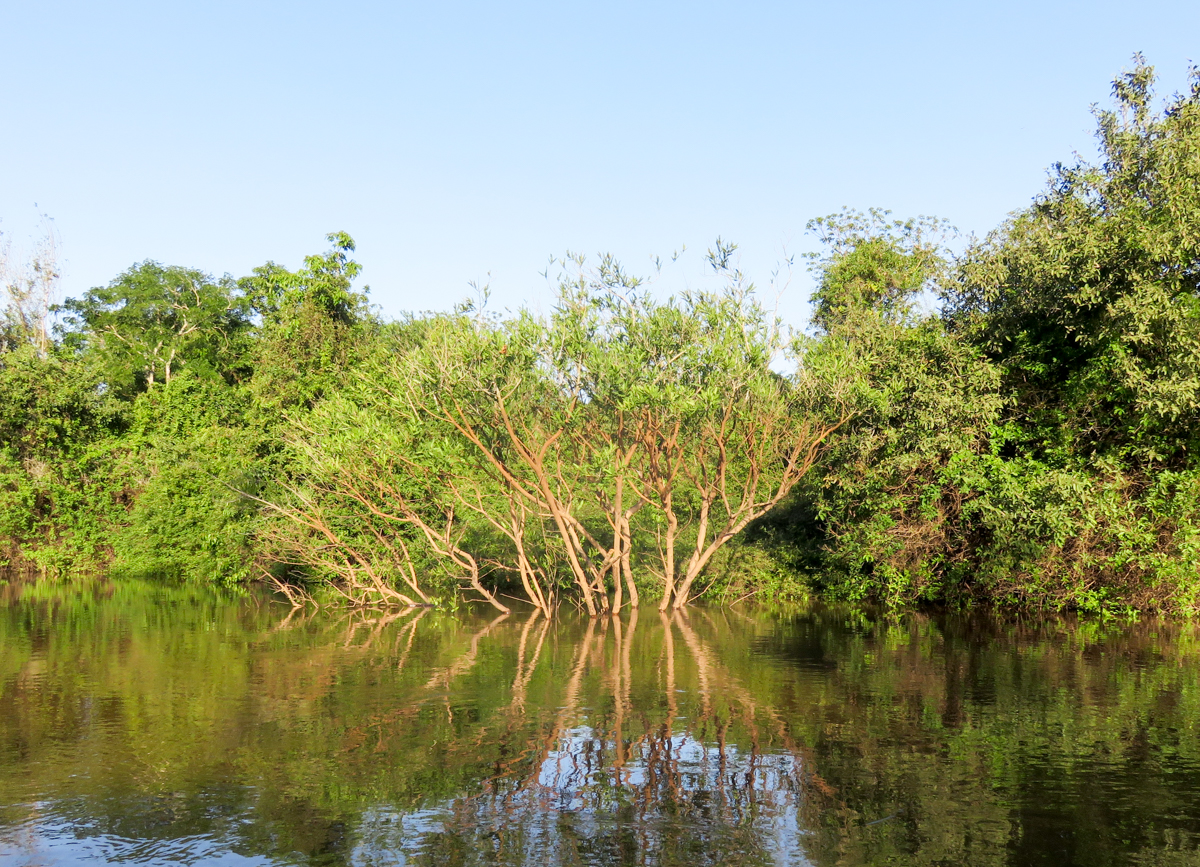
When we arrived, we were all greeted with a welcome drink – kind of like when you arrive at an all-inclusive resort. There was no alcohol in it, but it made me feel special anyway.
After a tasty lunch, we went back into the boat for some wildlife watching. Ronny told us a little bit about the animals that we saw as we quietly drifted past them. He grew up in Bení province and learned about the animals through his indigenous community and from wildlife guidebooks.
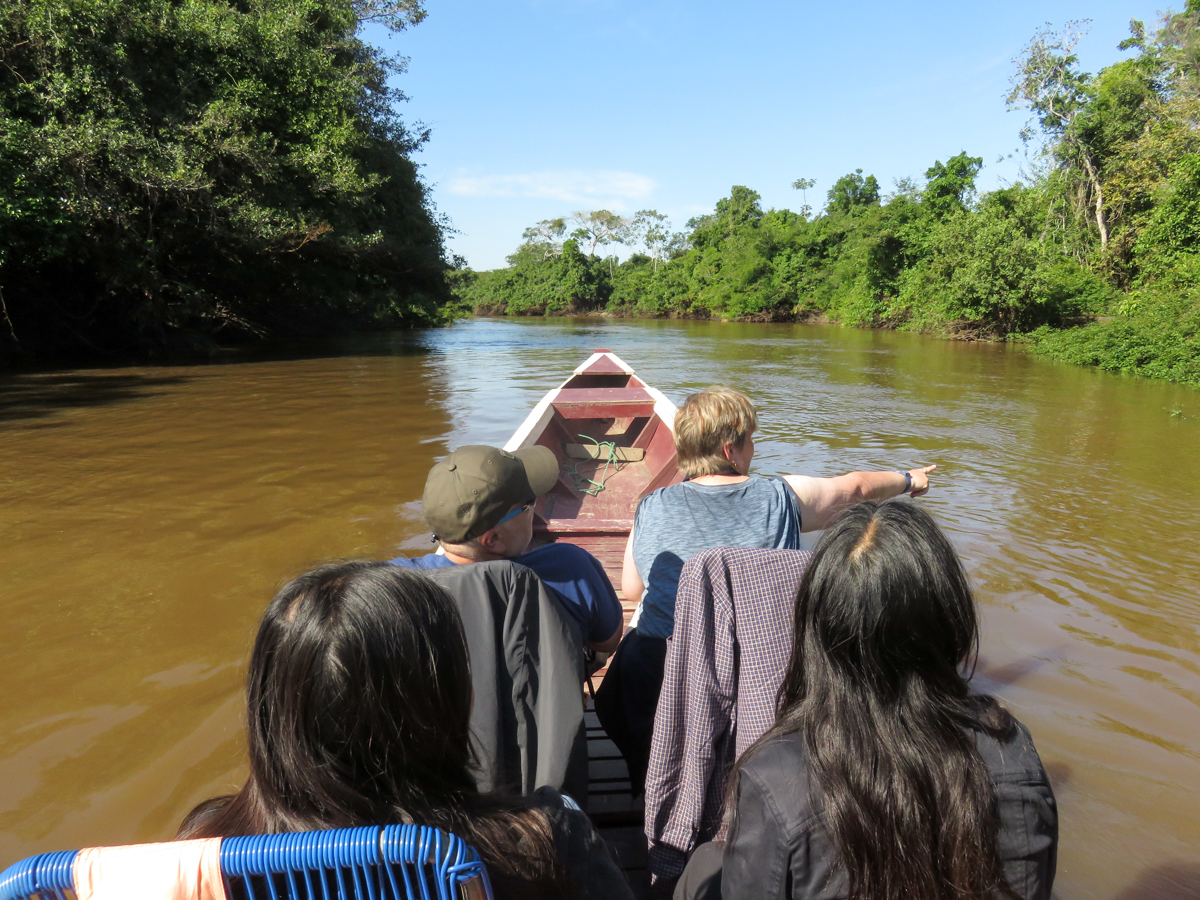
We were only in the boat for about 15 minutes when we saw our first pink dolphin:
The photo doesn’t really show it but it was definitely pink. It breathed out of its blowhole as it swam past us and its back surfaced a few times before going underwater. Just a quick glimpse, but it was fascinating. Throughout the three-hour boat ride we encountered about a dozen pink dolphins. We only saw their backs and never their faces. This wasn’t Sea World, where the dolphins leap into the air and giggle in exchange for a treat. This was their home. I felt very blessed to be able to see them in their natural habitat.
Seeing the dolphins was a highlight but I was equally fascinated by the birds that perched themselves along the river. I had never seen these birds anywhere else before, and they were really interesting to watch.
The Anhinga is also known as the snake-bird because it swims with its long neck and head sticking out of the water.
One of the cutest animals on the tour was the capybara, the world’s largest rodent. They look like gophers but they grow up to four feet long. Unlike other rodents, their feet are webbed so they can swim in the rivers. I giggled every time I saw one.
The river wound through private reserve land owned by Mashaquipe, so there was barely any other boat traffic. Other (cheaper) tour companies tend to take their clients to popular rivers that are full of other noisy tour boats. Whenever Ronny turned off the boat motor, we could hear bird wings flapping and reptiles splashing and water lapping through the mangrove trees. It was so peaceful and very special.
Towards the end of the tour, we were fortunate to see howler monkeys and spider monkeys. The little spider monkeys actually jumped into our boat and hung out for a while.
Ronny took us back to the lodge for dinner and we all rested for about an hour before our nightime tour of the caimans. At night, caimans’ eyes glow red along the river banks. Ronny told us that caimans can’t close their eyes when they sleep so their eyeballs glow red to protect them from being disturbed. Their red eyes look super creepy, but it was pretty cool.
Our tour group saw every animal we had hoped to see that day, and we were all pleasantly surprised to see so few mosquitos. The temperature was unusually cool during the day, and we all had to wear long sleeves and pants to bed to stay warm overnight. Despite the chill, I had a glorious sleep in a bed all to myself. I spread out and moved around as I pleased, and I woke up completely rejuvenated.
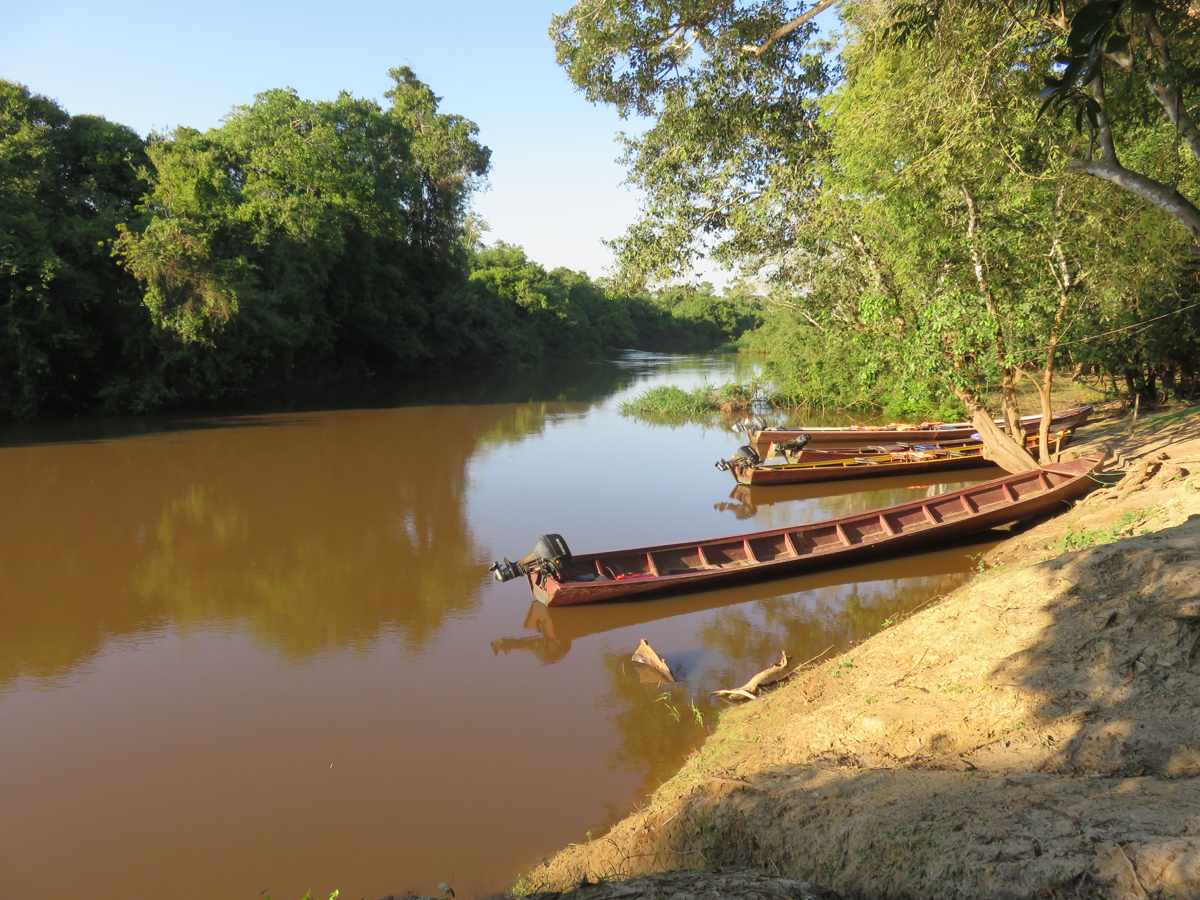
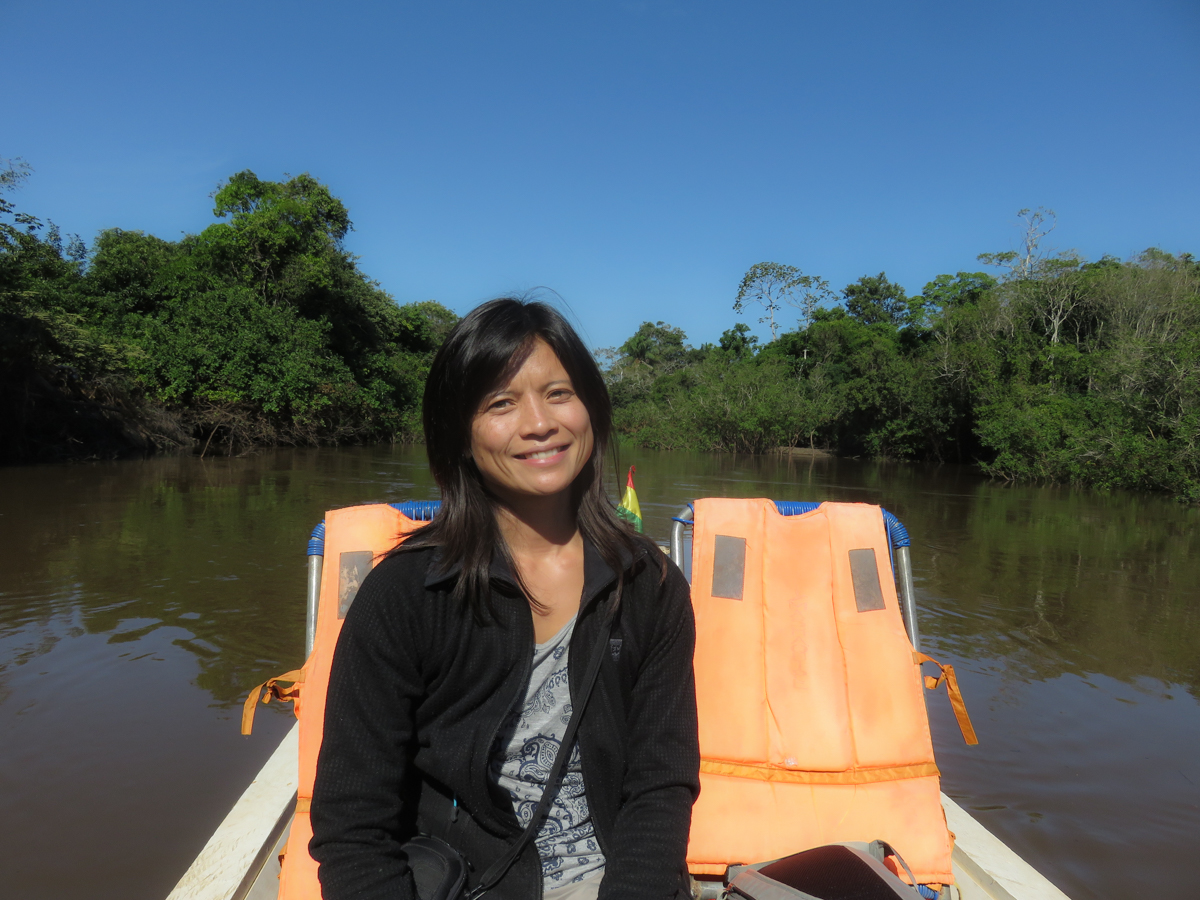
I was happy when I returned to Rurre. Happy that I experienced such a great wildlife tour, and happy to return to Gregor with a fresh perspective. While I was away he putzed around the van and toodled on his computer – two activities that make him happy. Now that we were both re-energized, we were ready to tackle the heinous drive back to La Paz.
Now that I’ve finished writing this story about my Amazon adventure, I’m reminded that Gregor and I regularly face challenges and achieve goals together on this trip. It all brings us much closer to each other, but sometimes the closeness is too much. Whether we’re living in a van or in a house, we each need some personal space and time to do our own thing every now and then.

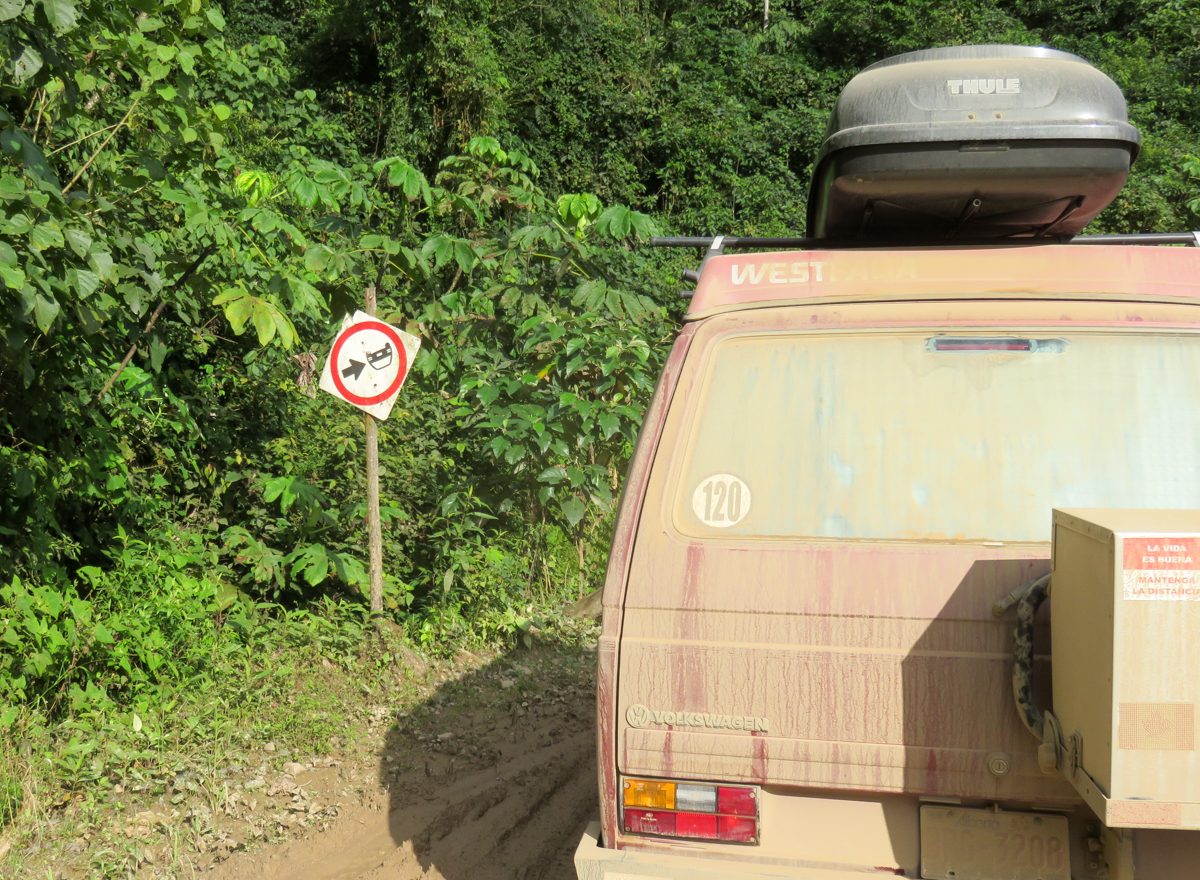
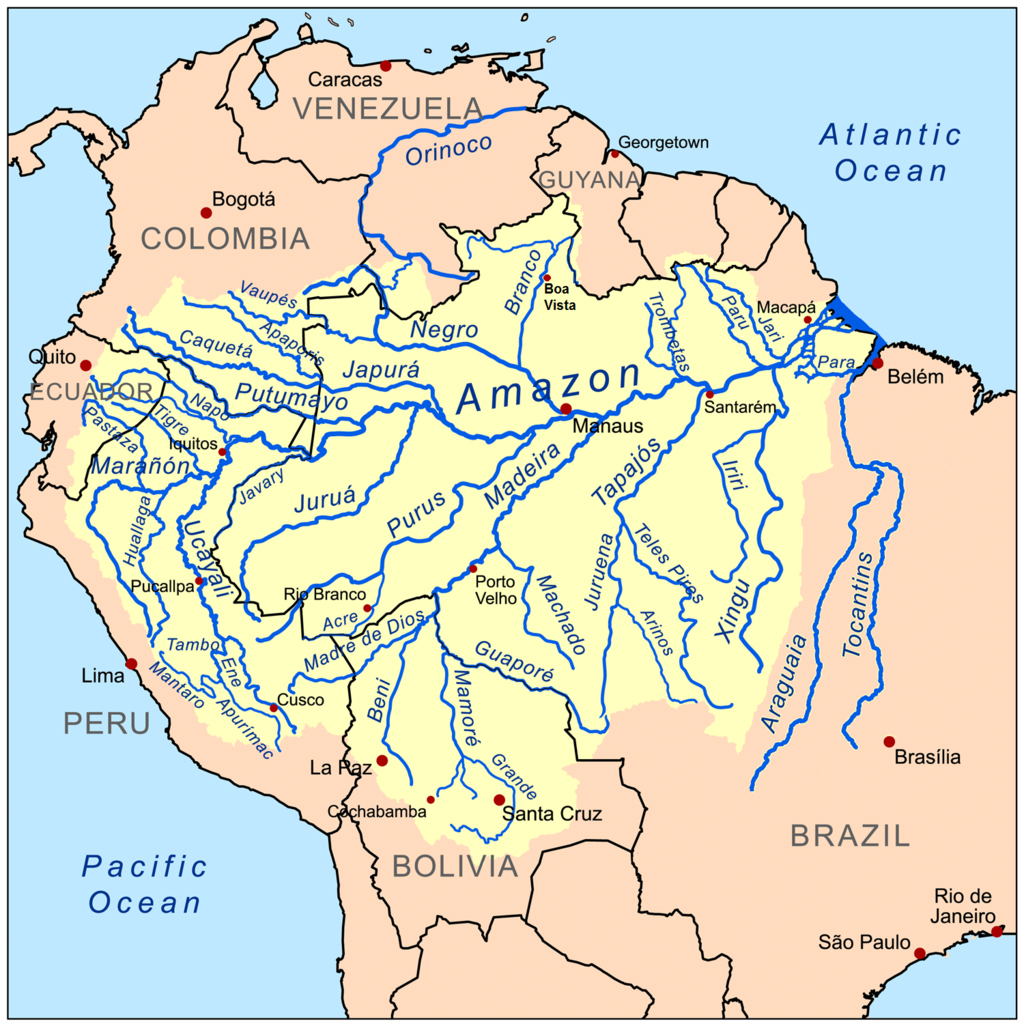

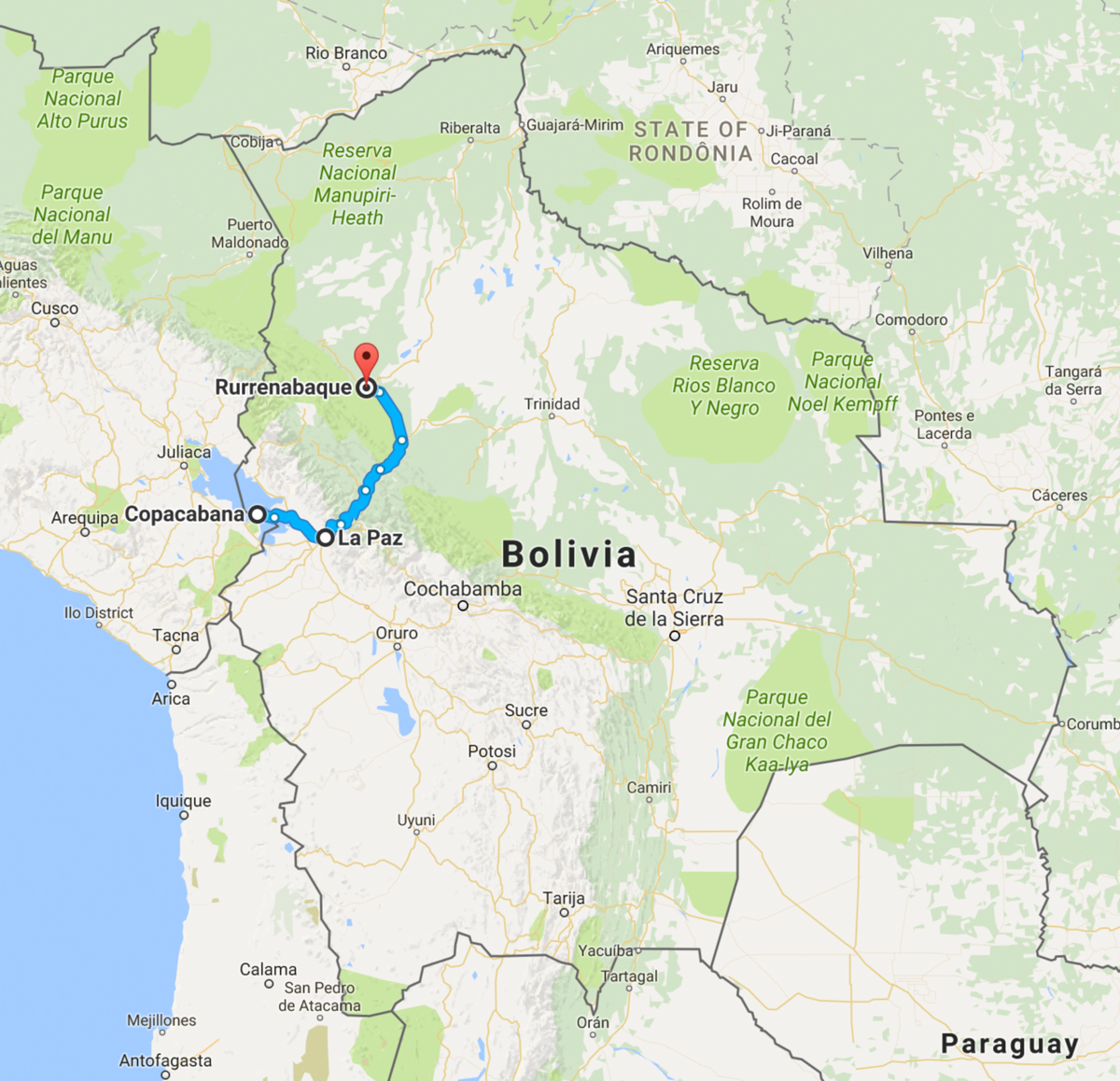
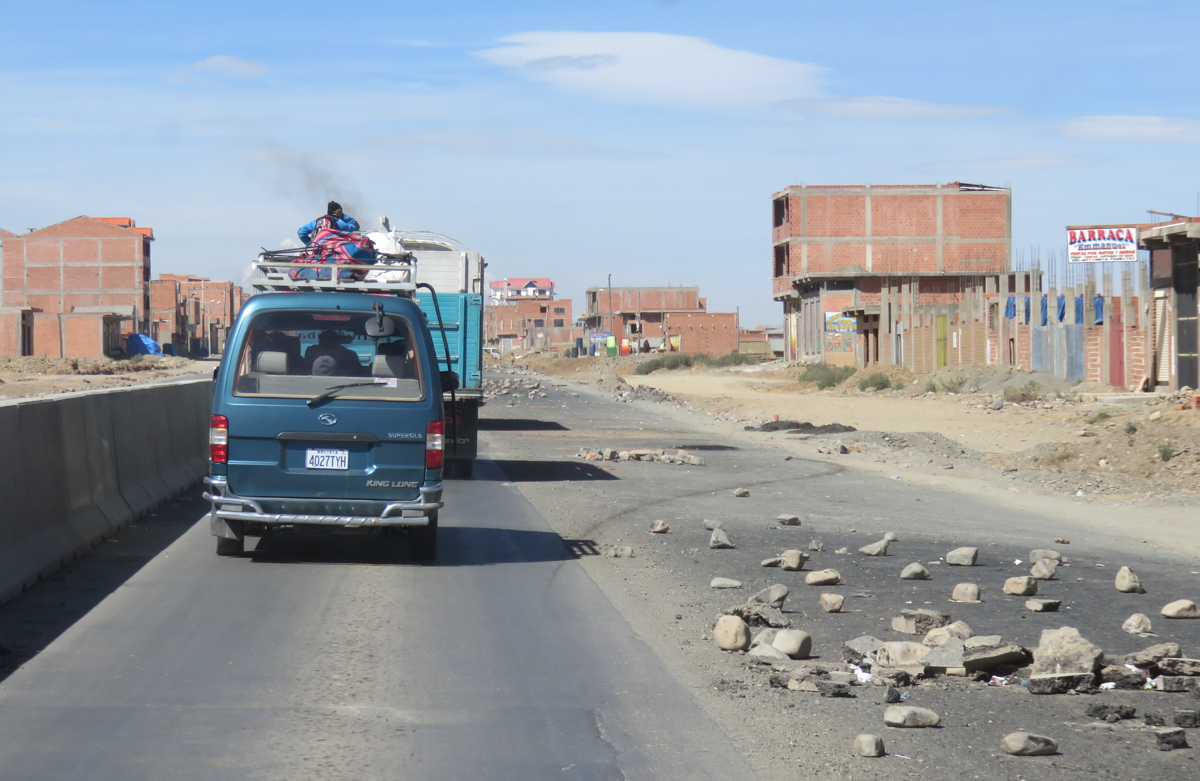
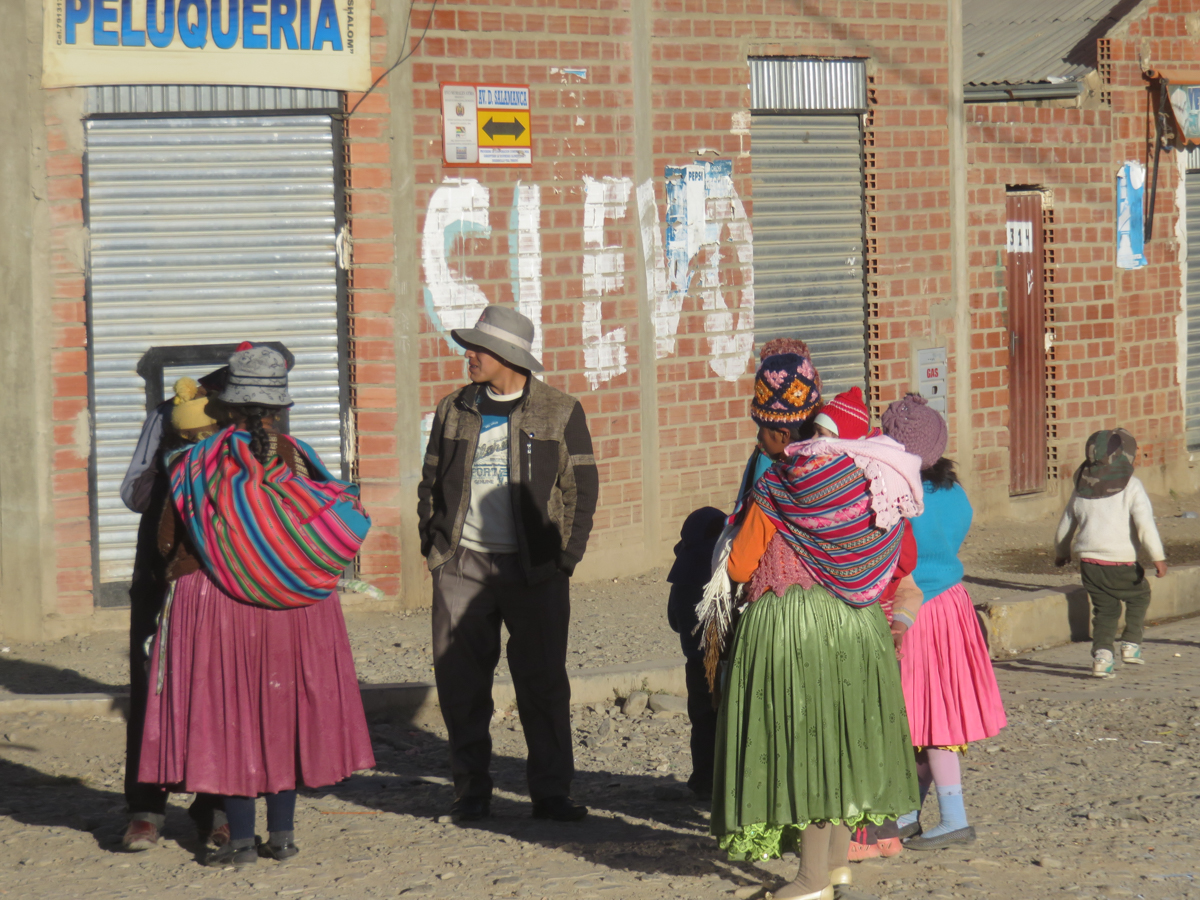
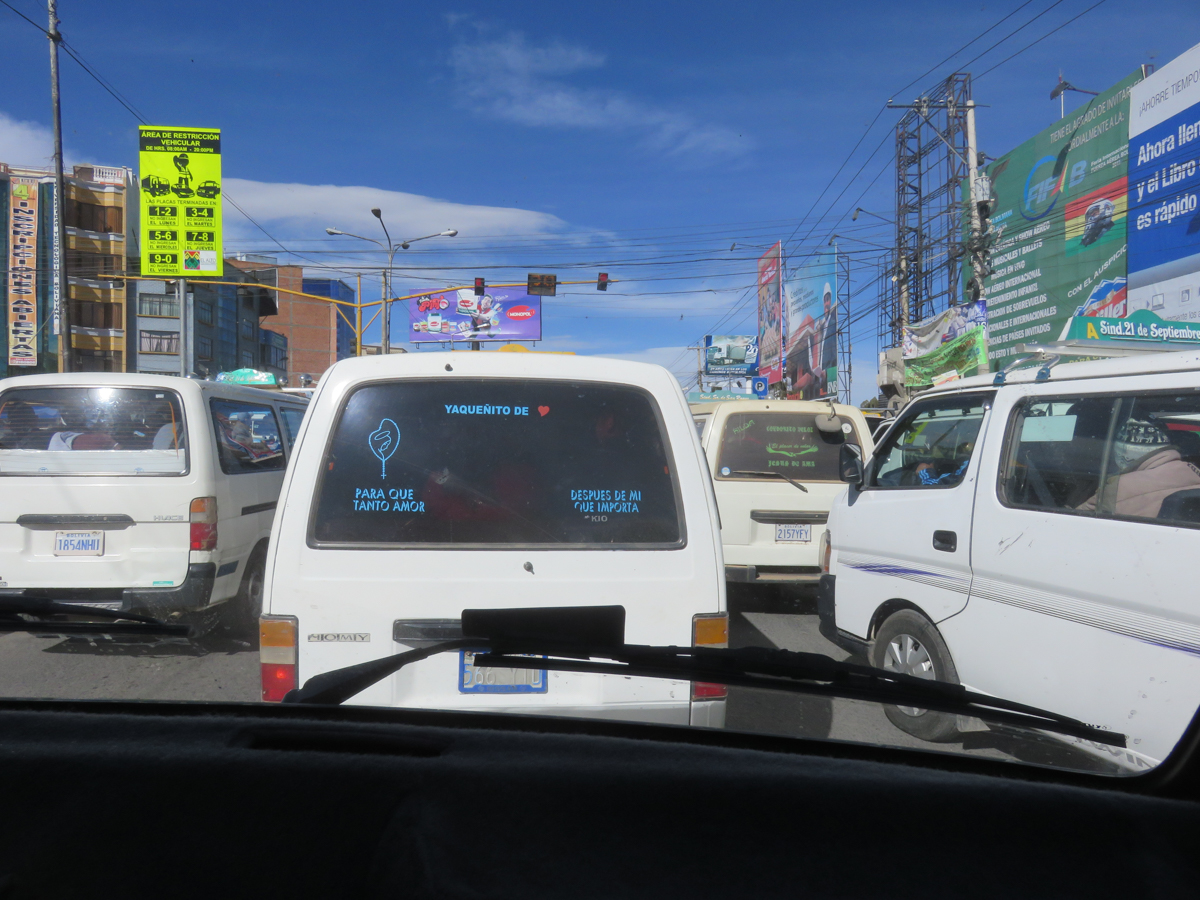
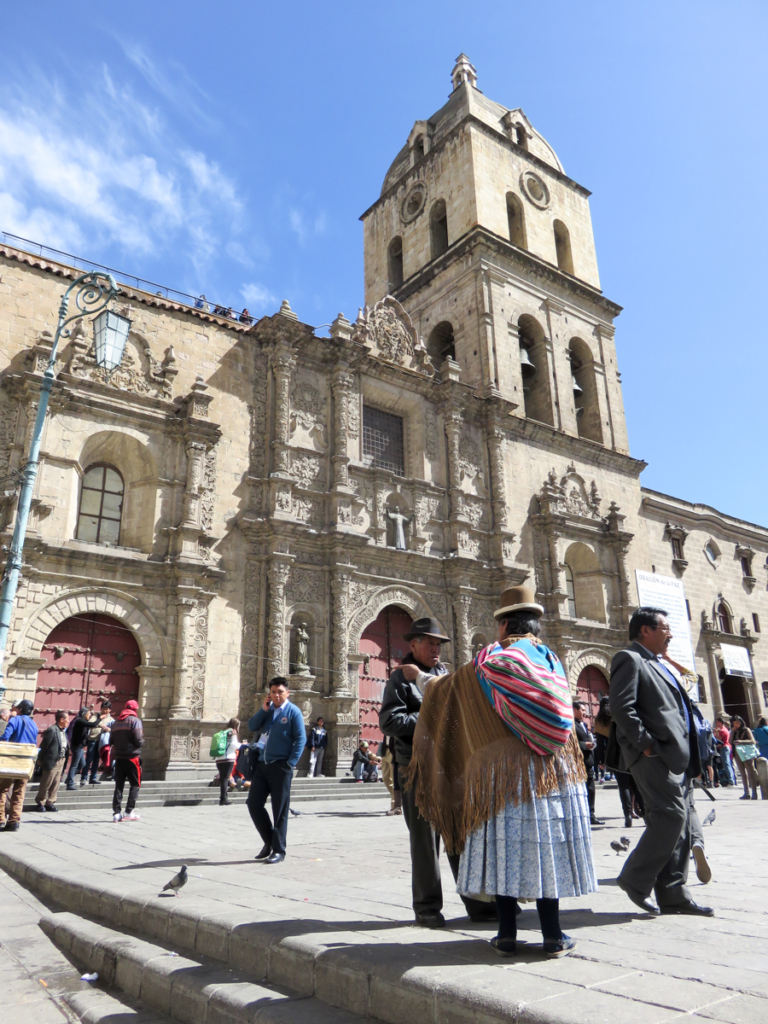

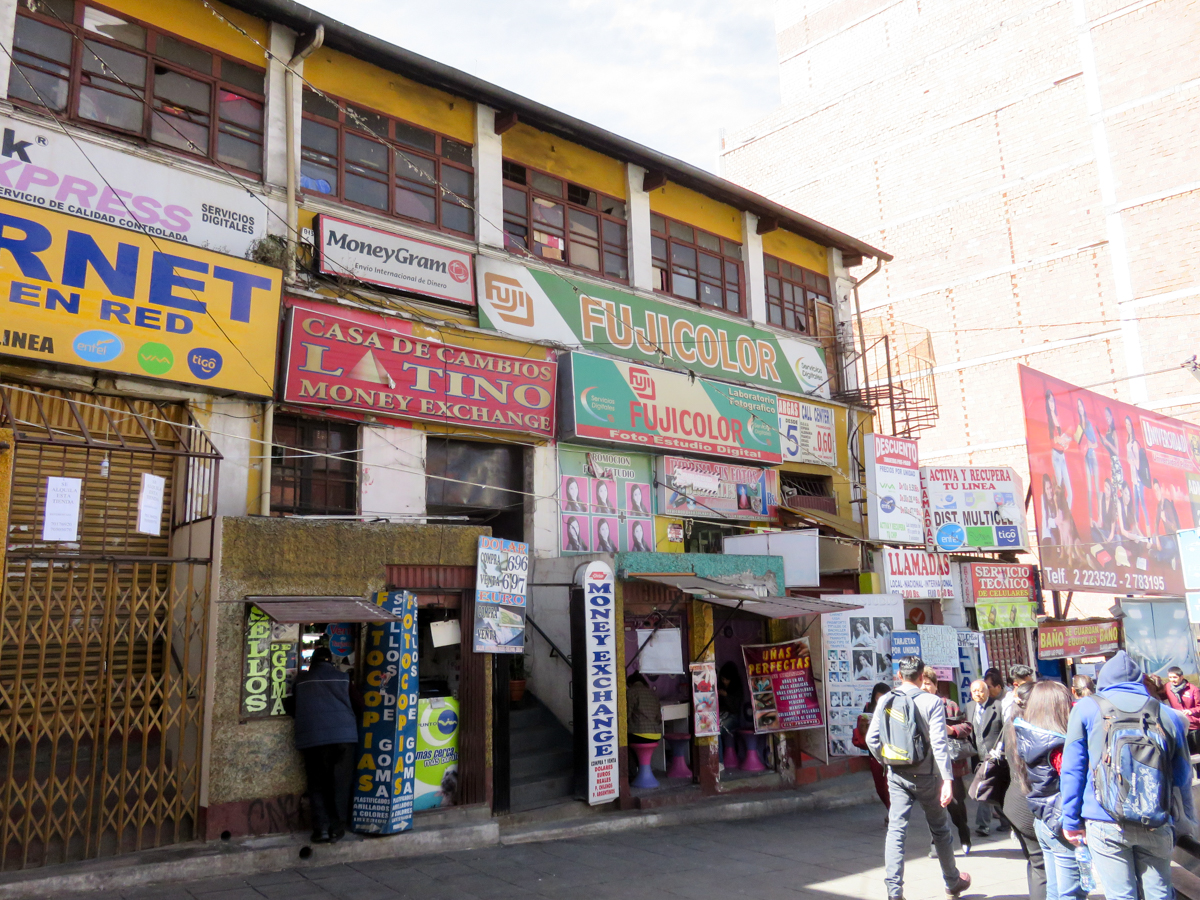
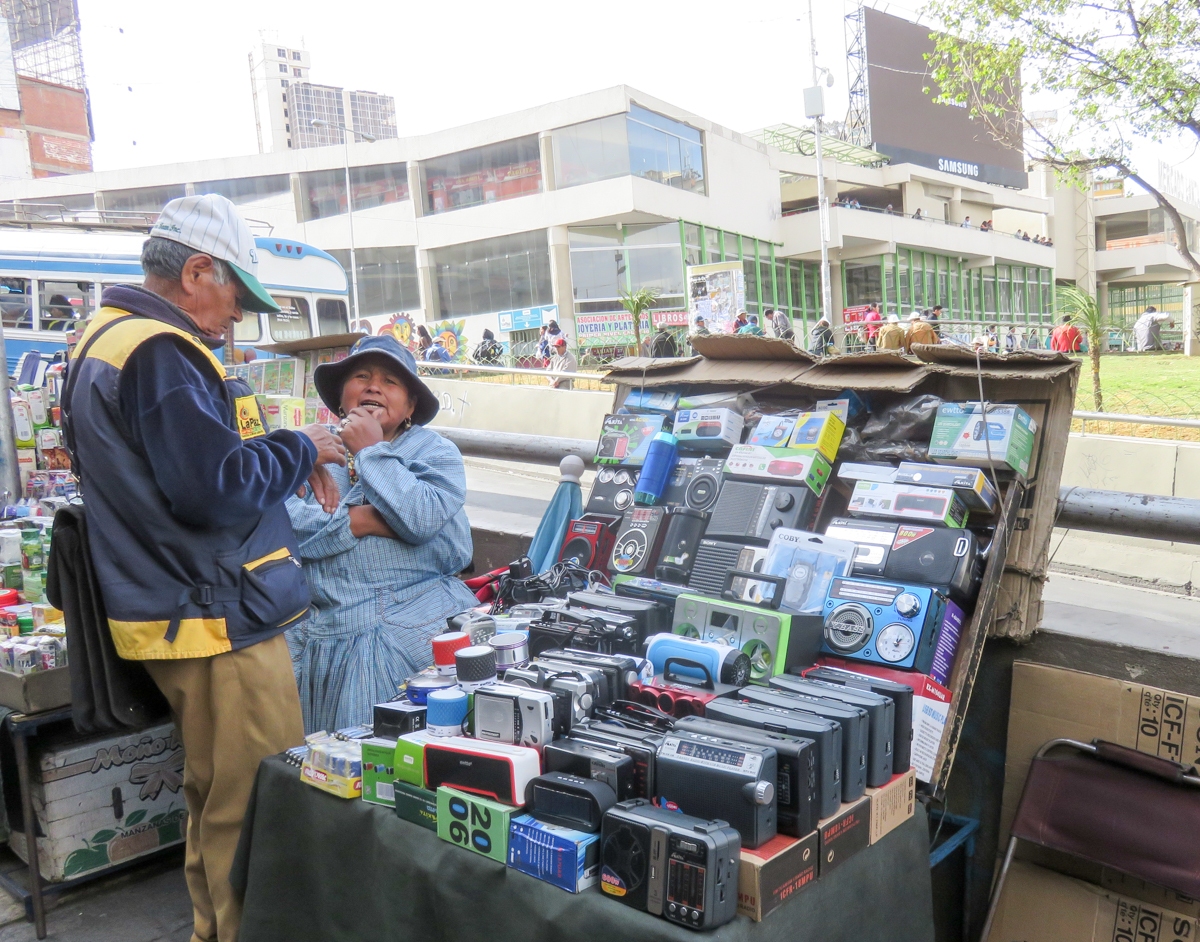
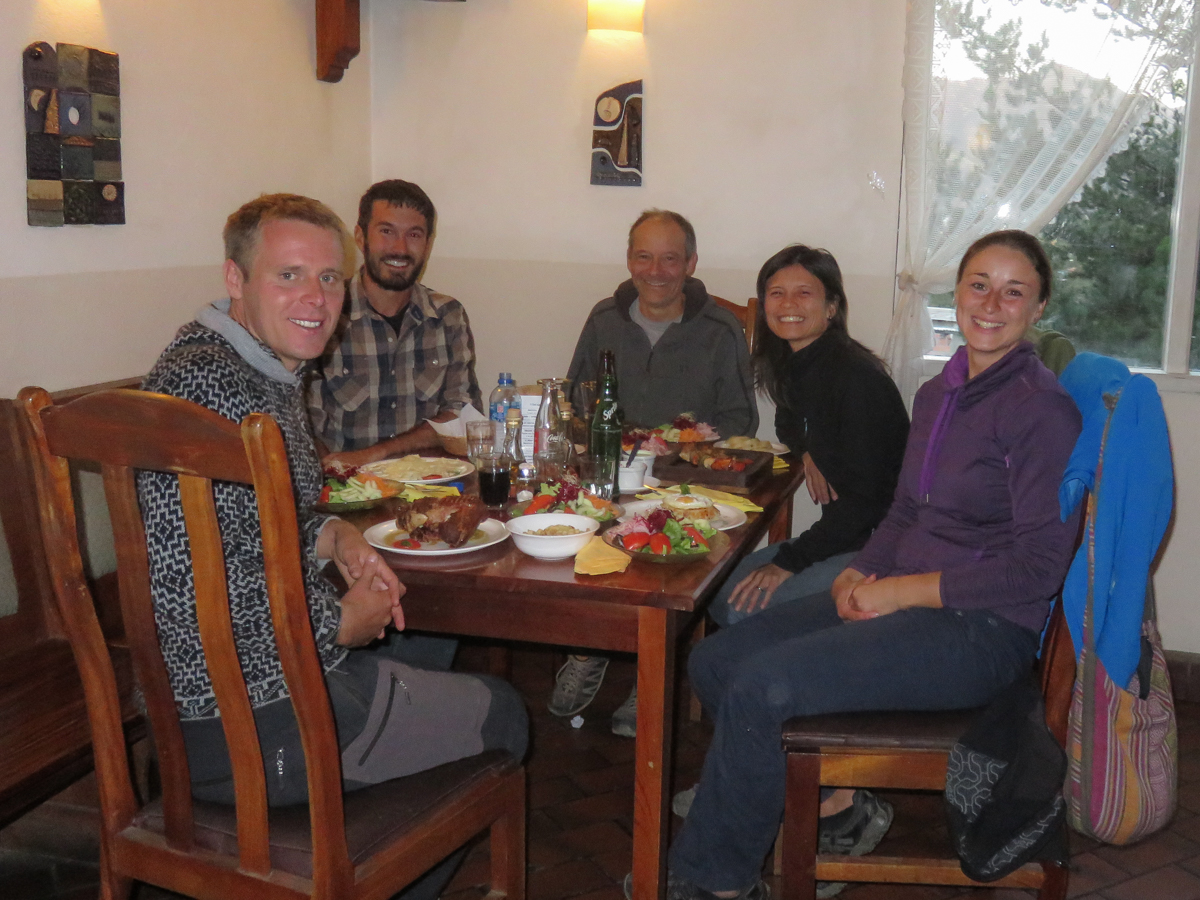

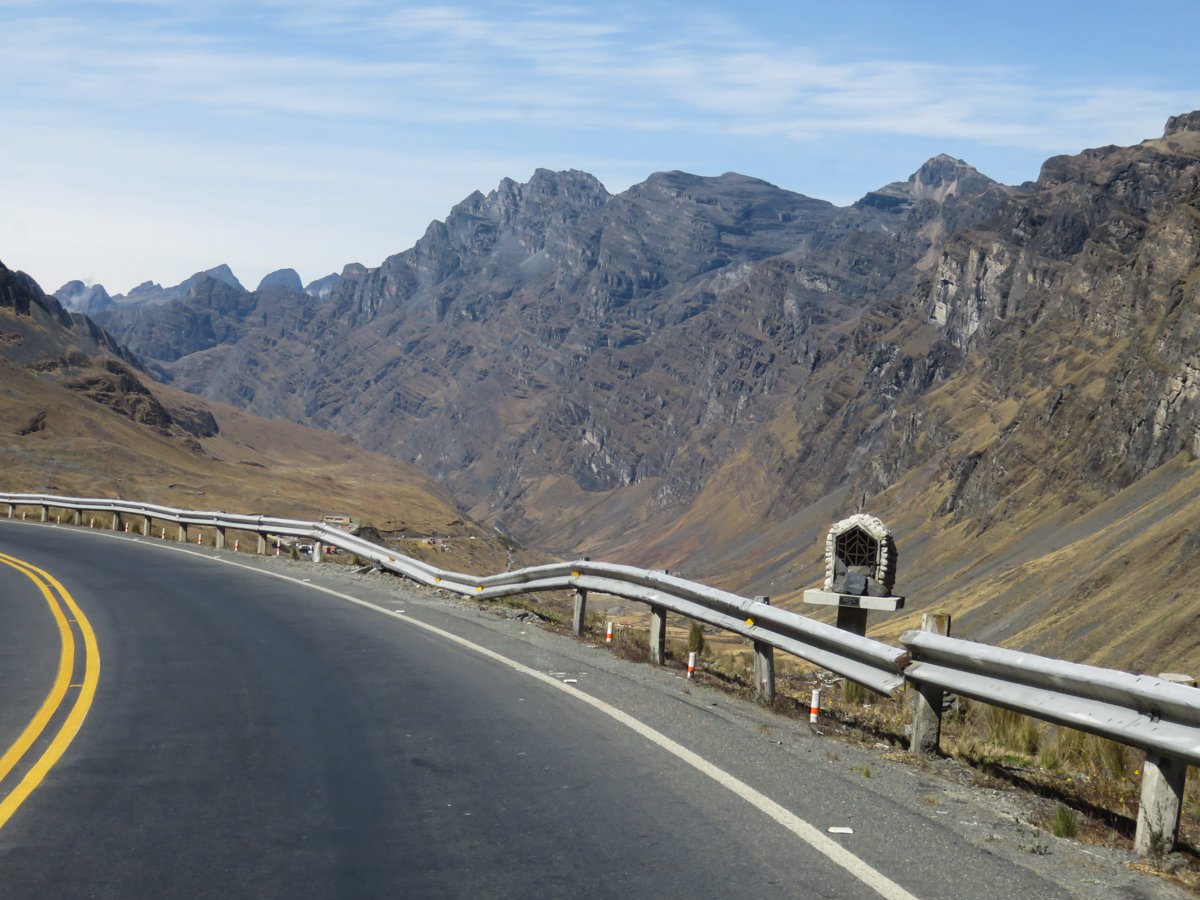
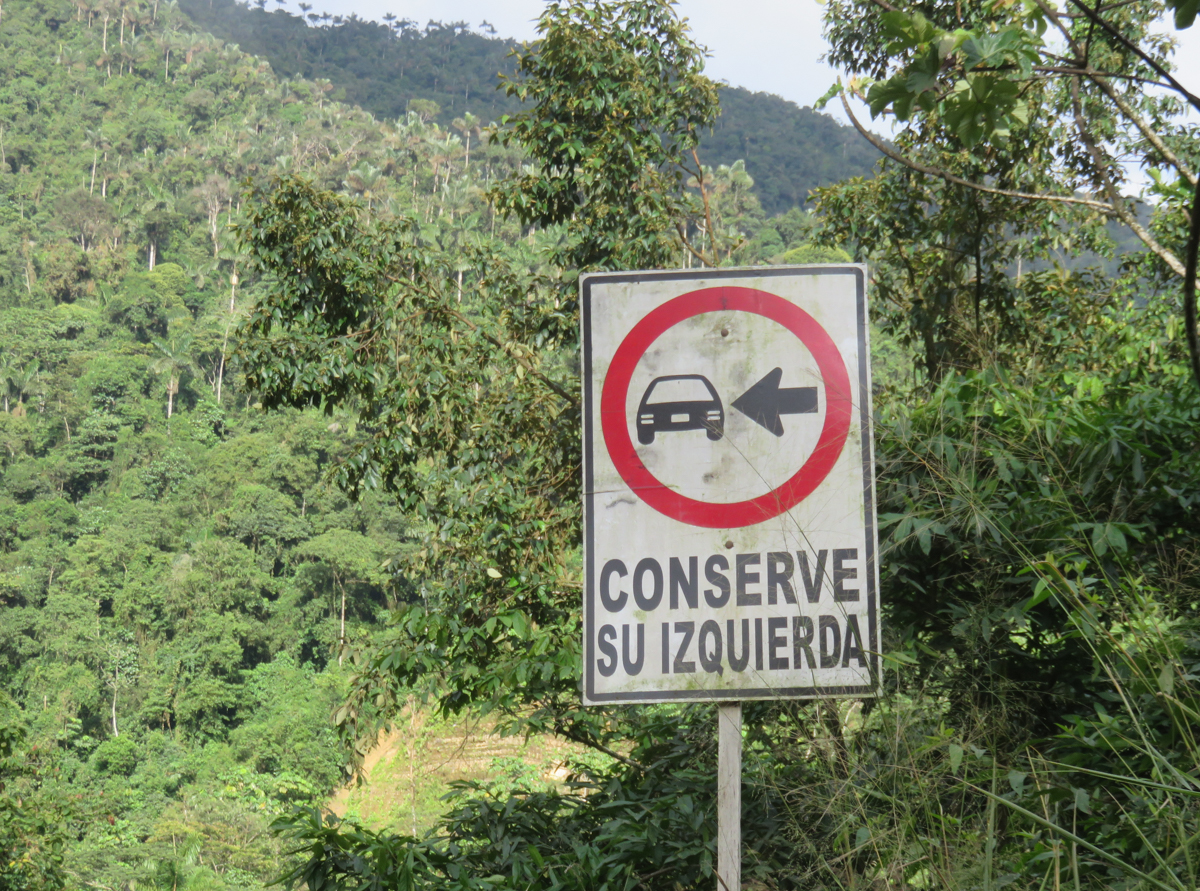
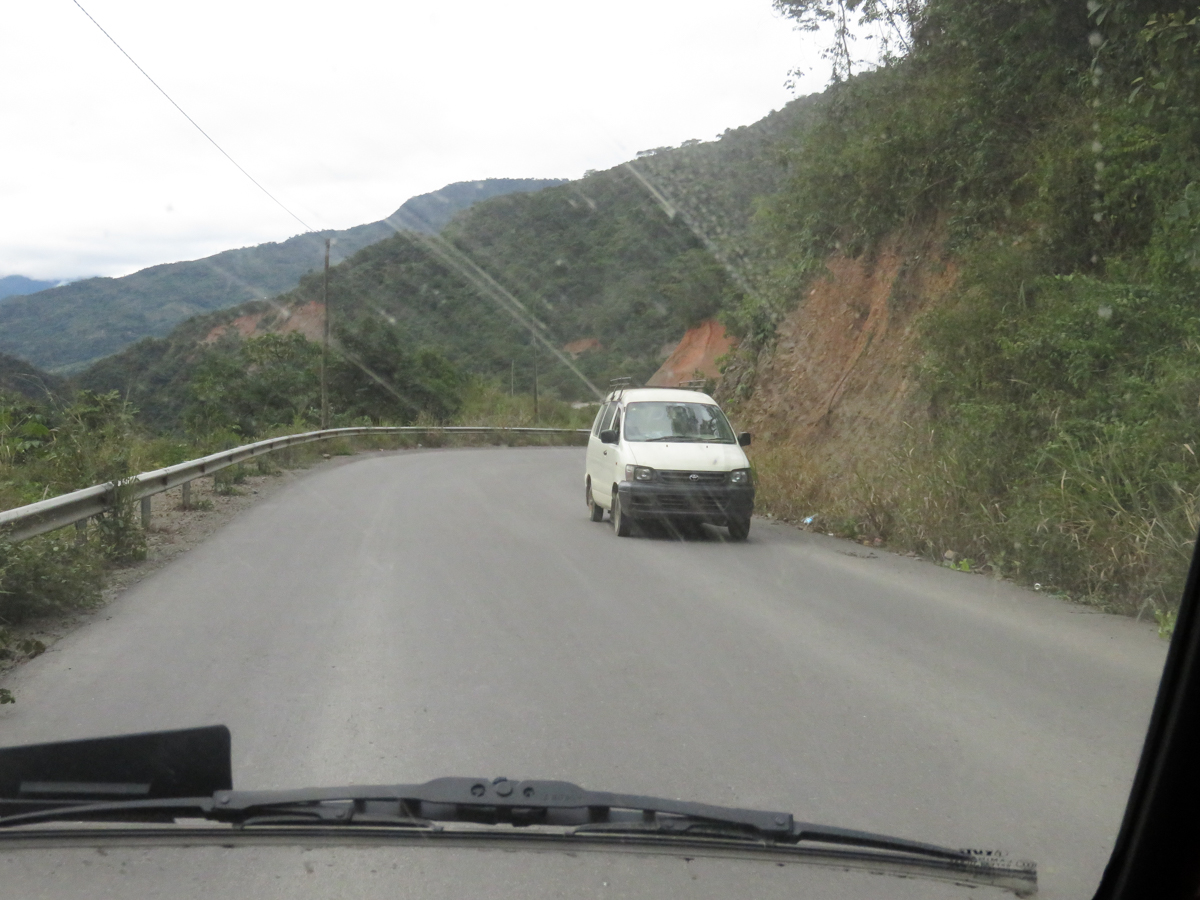
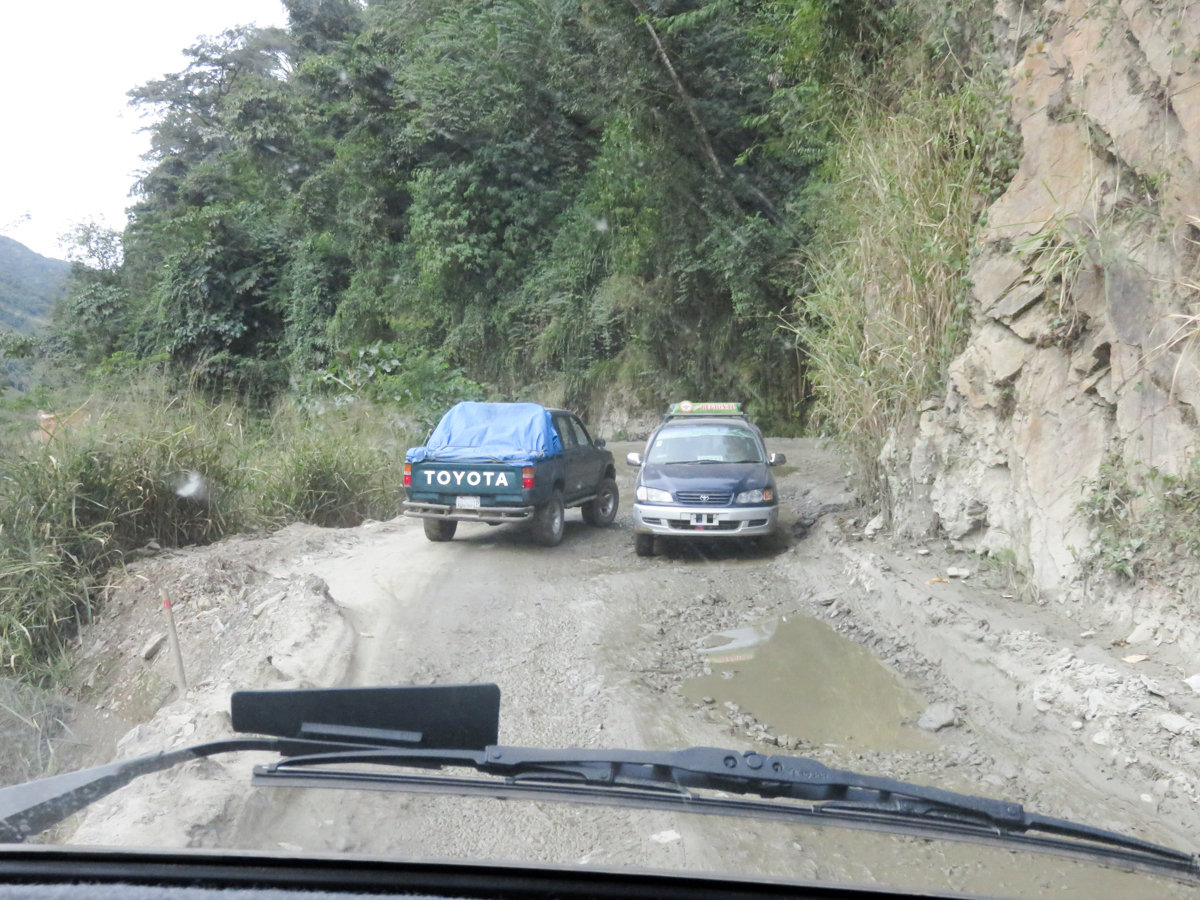
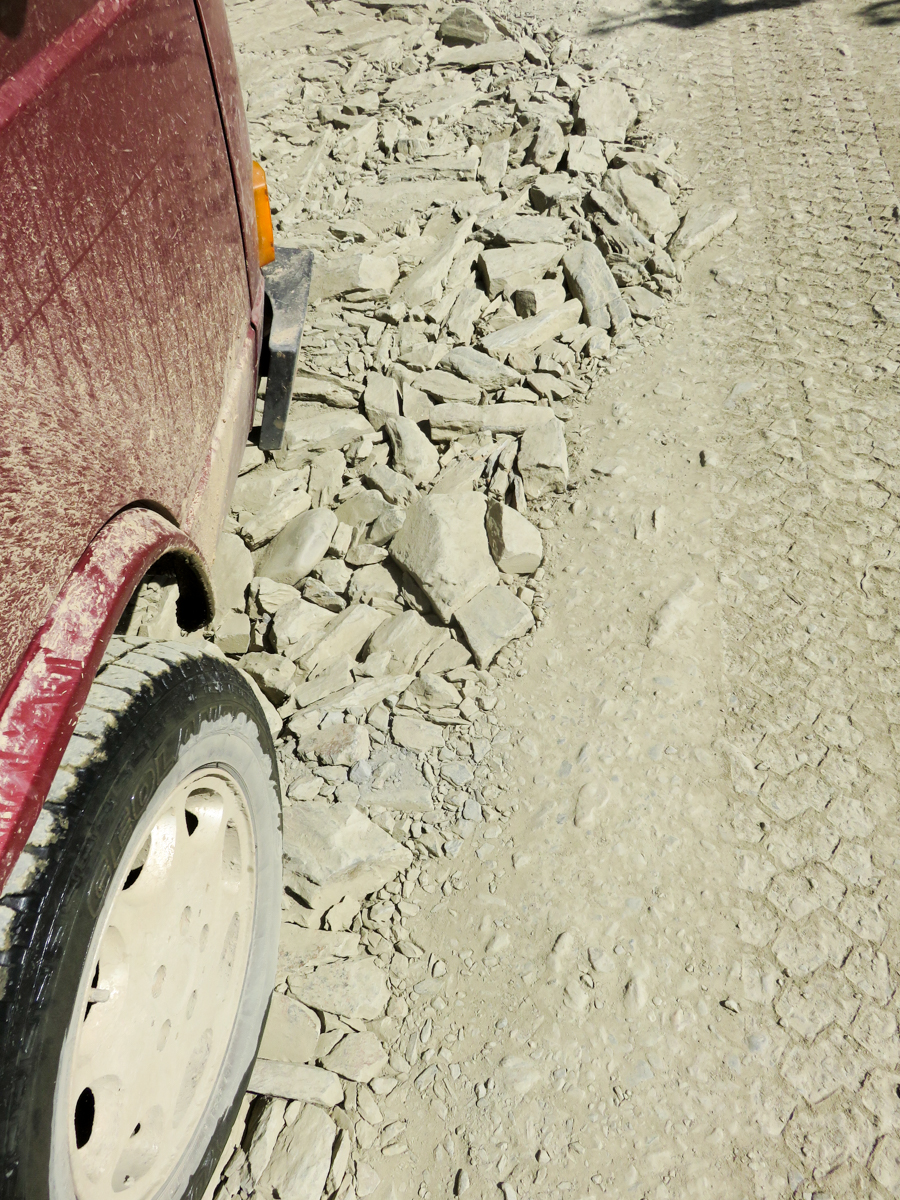
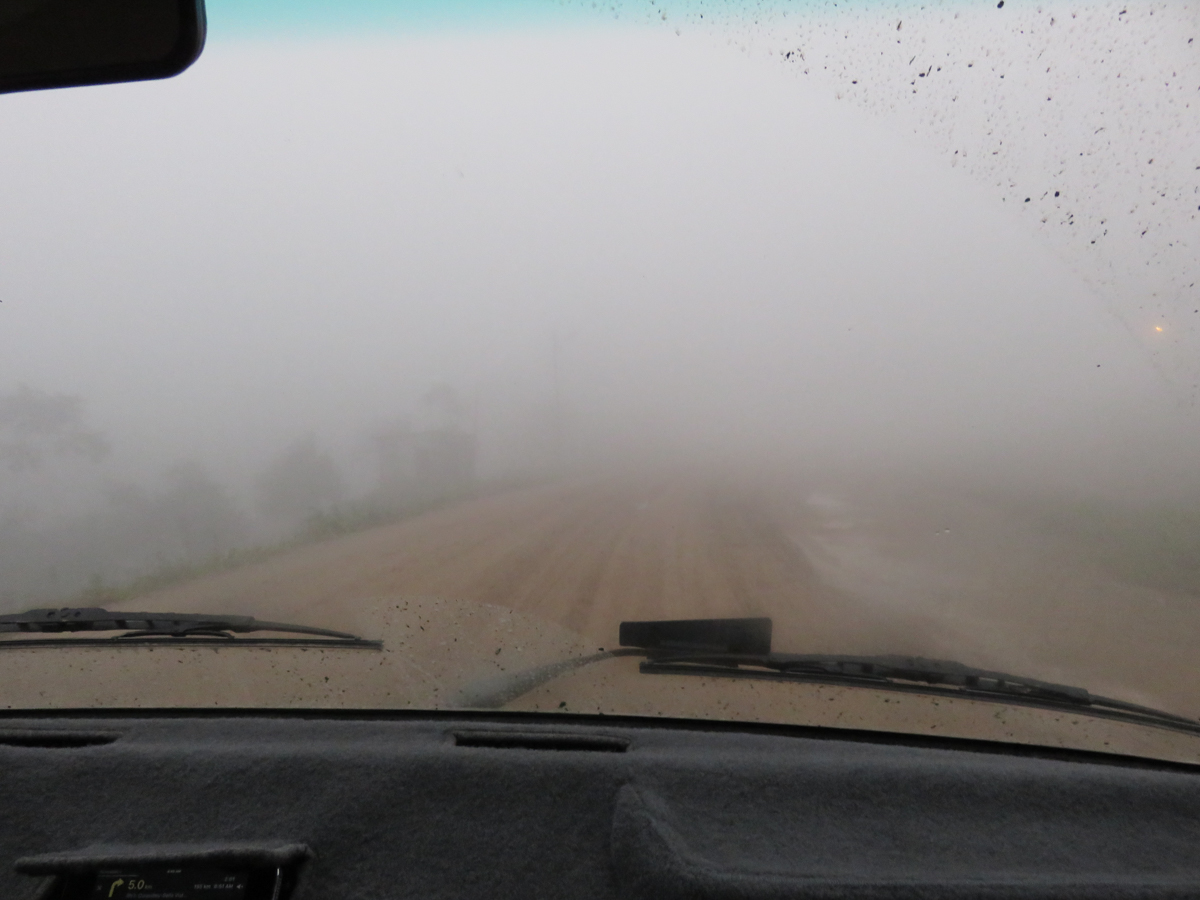
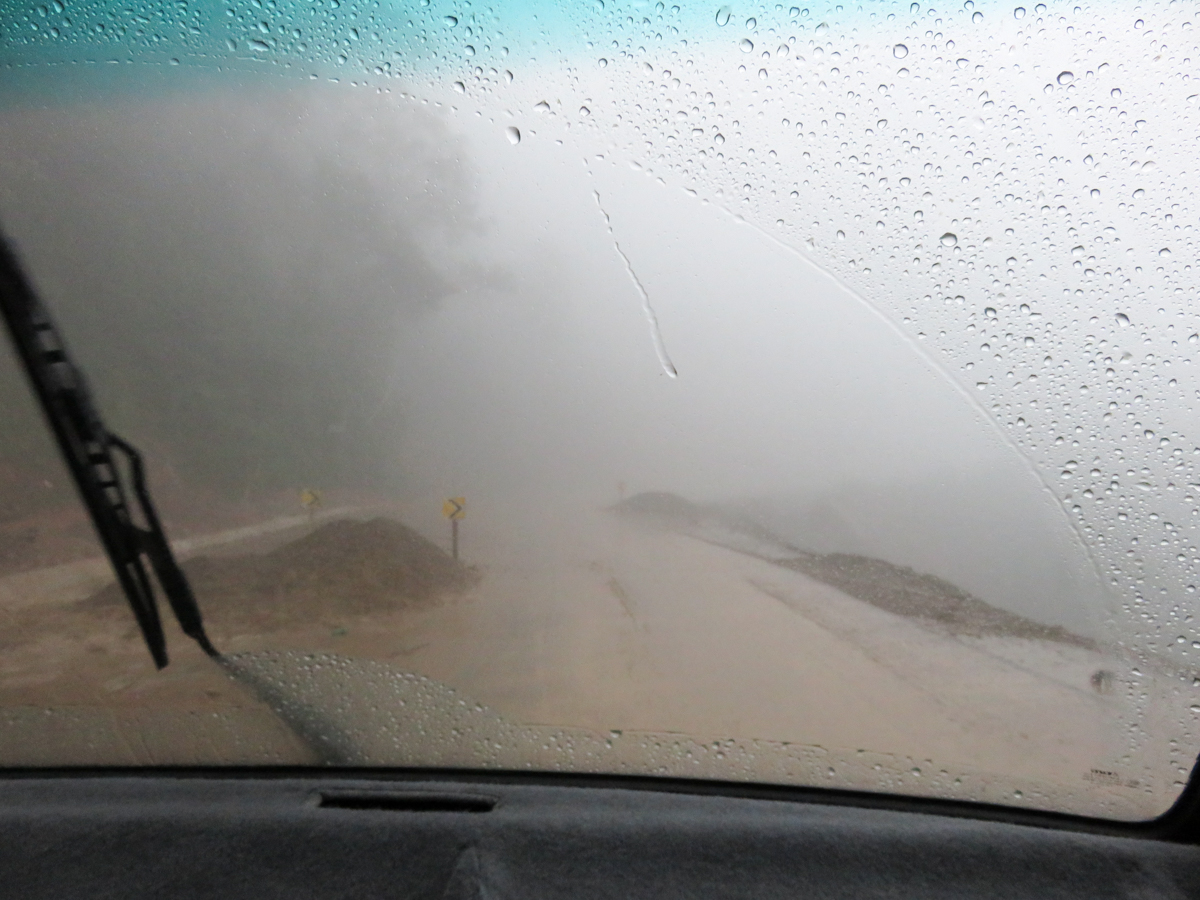

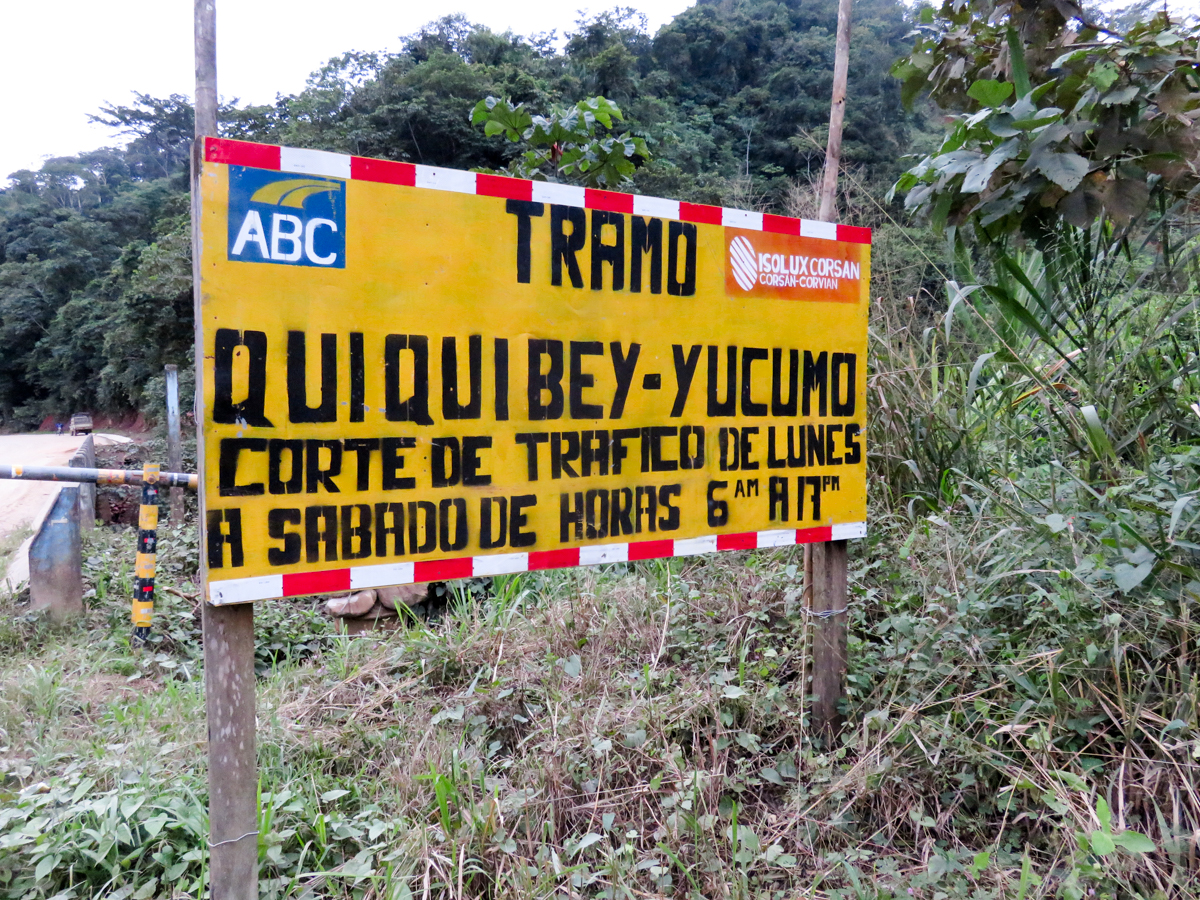
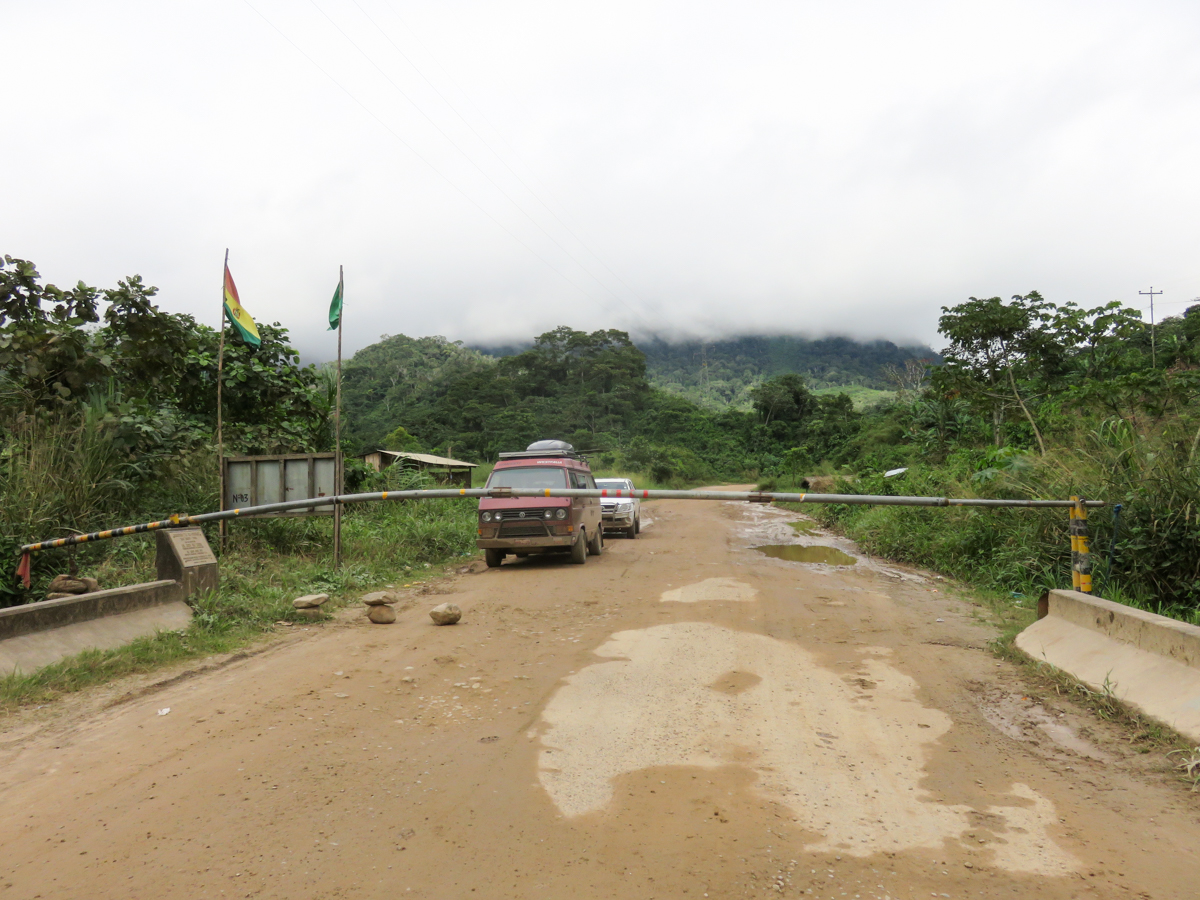

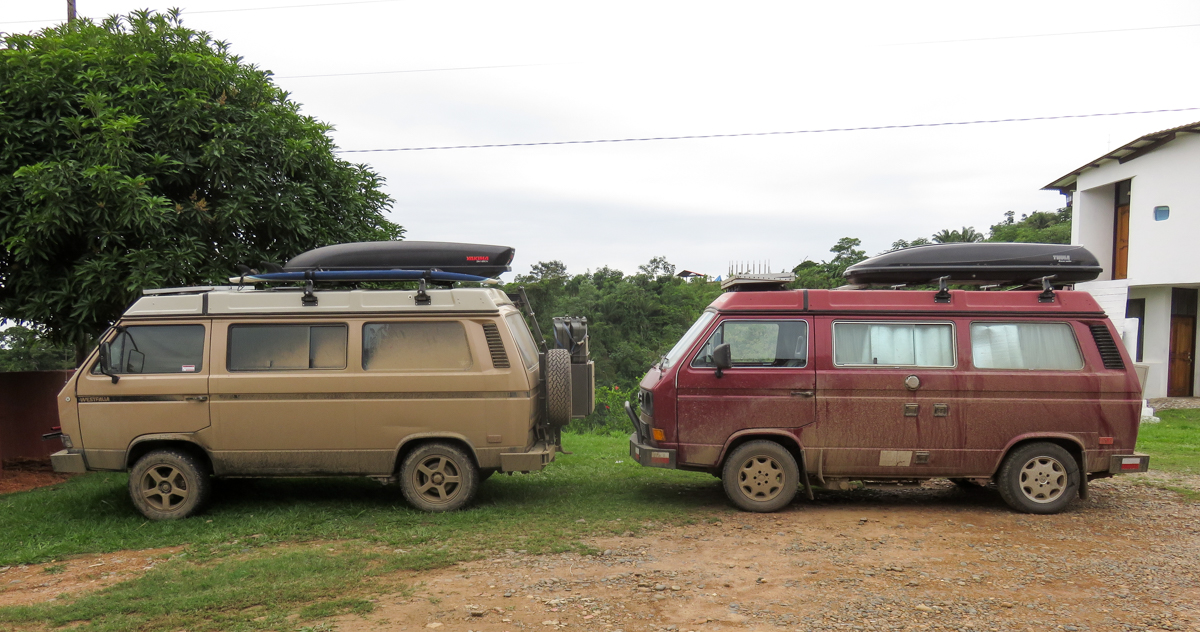
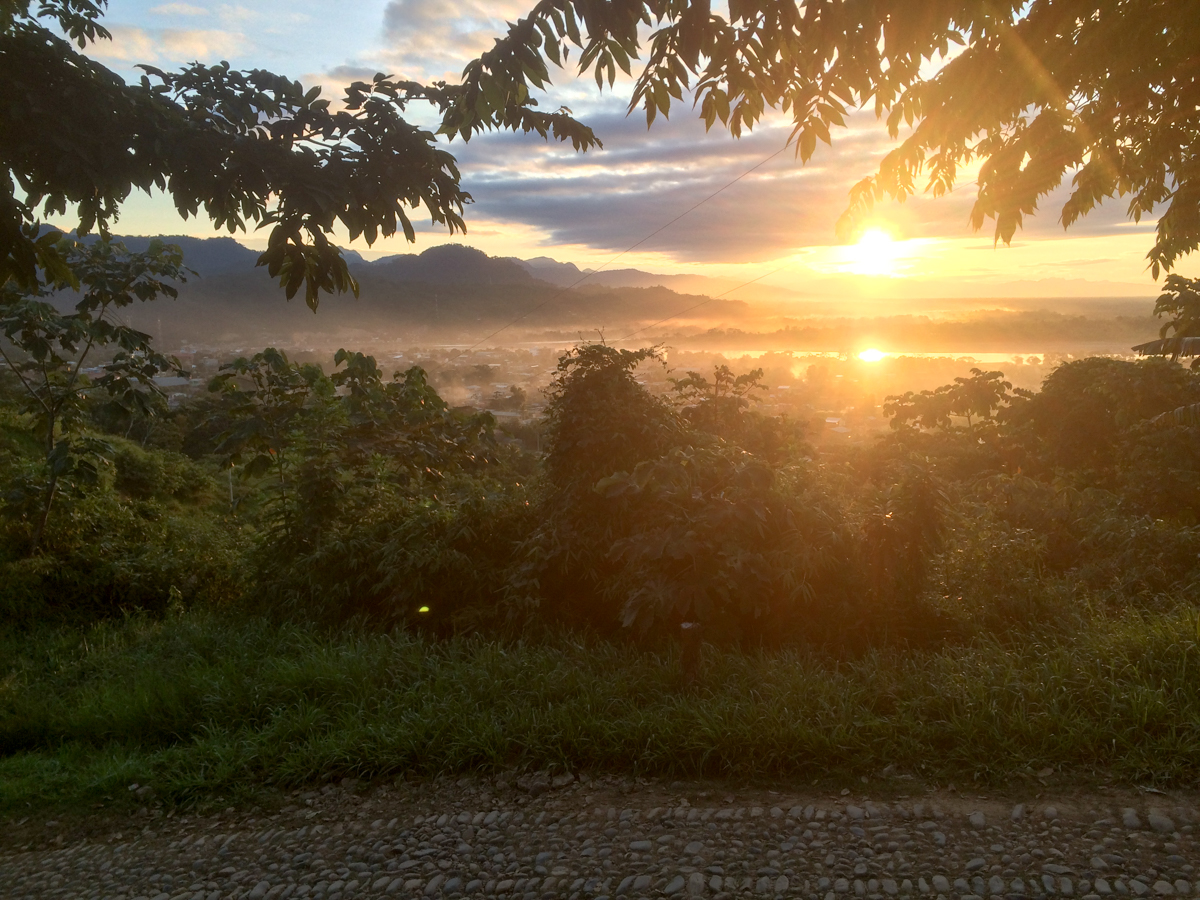
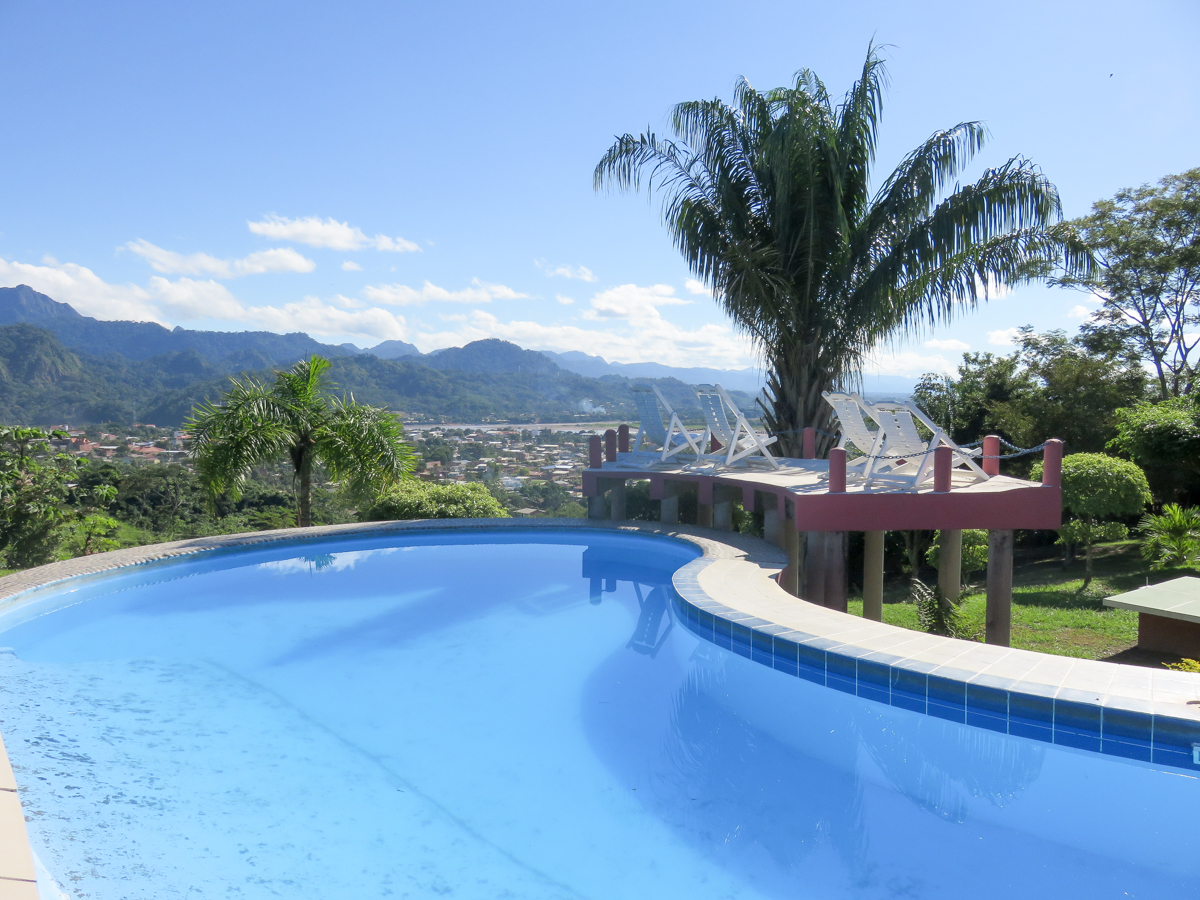
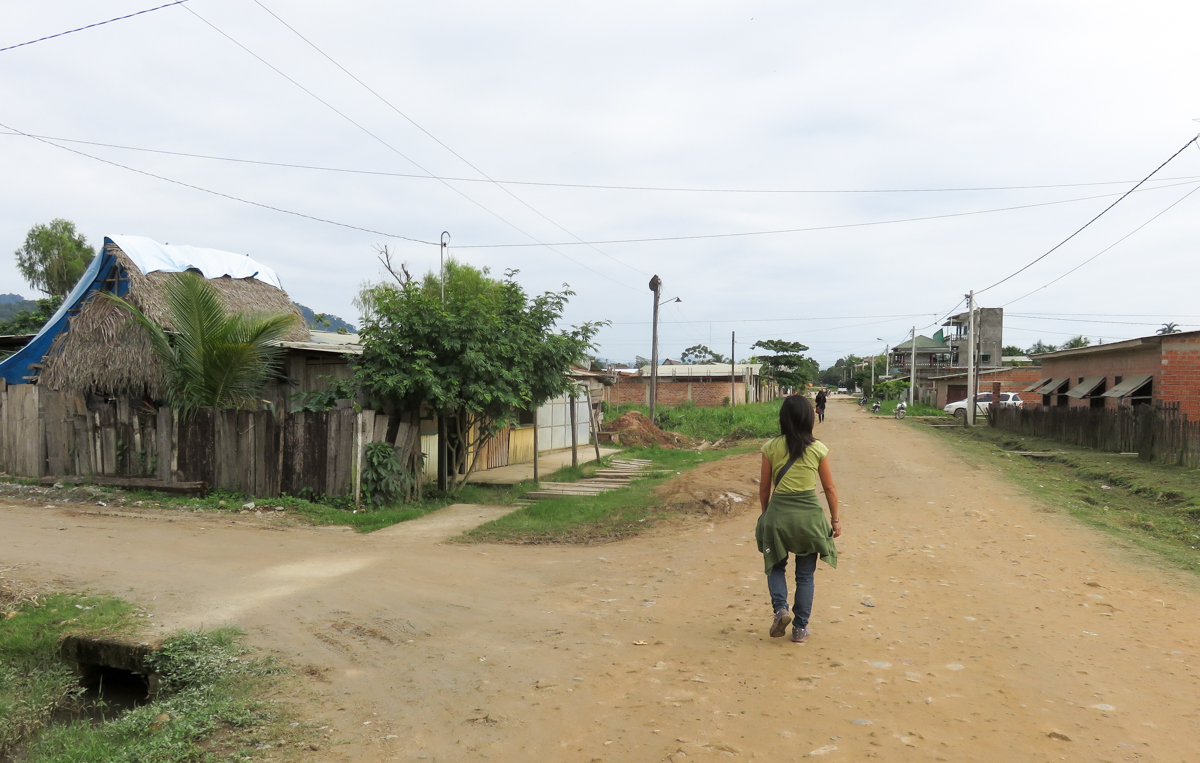
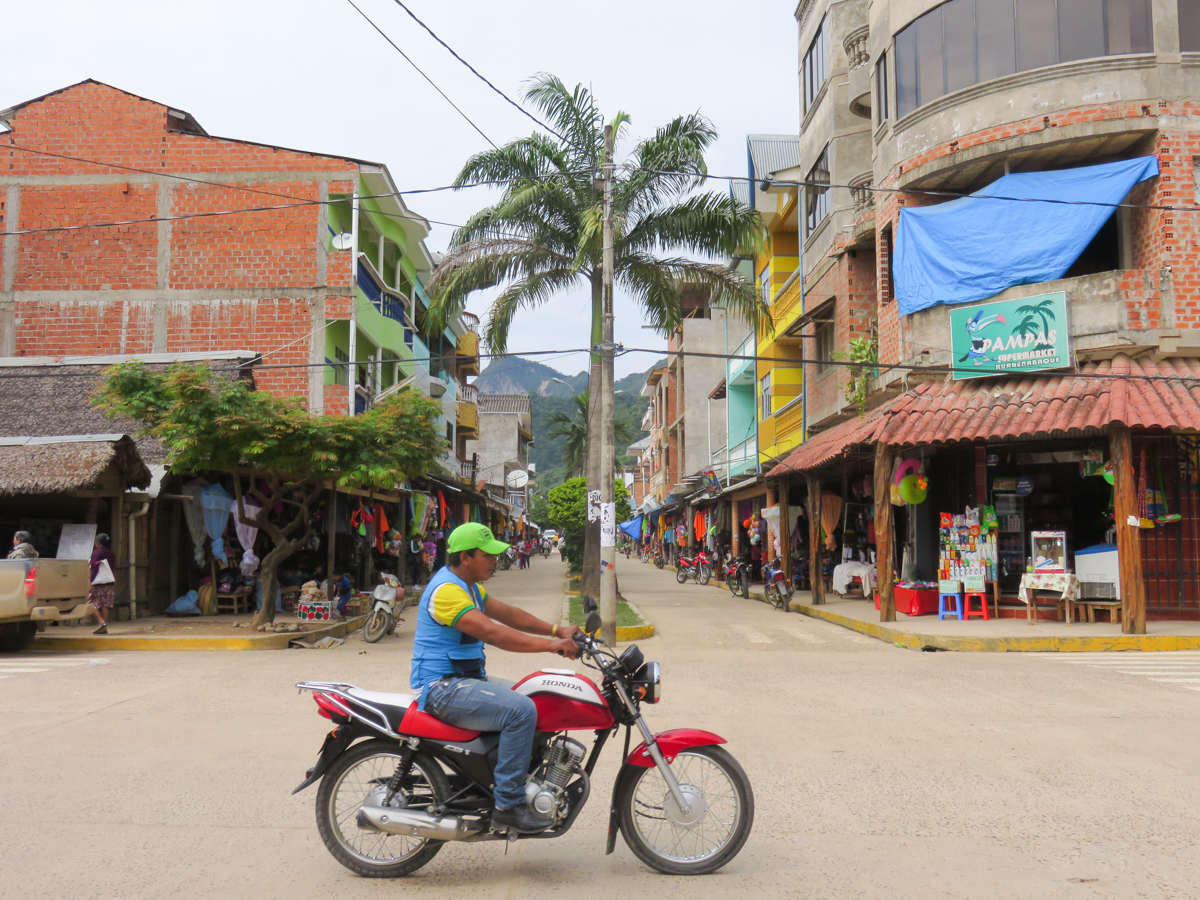
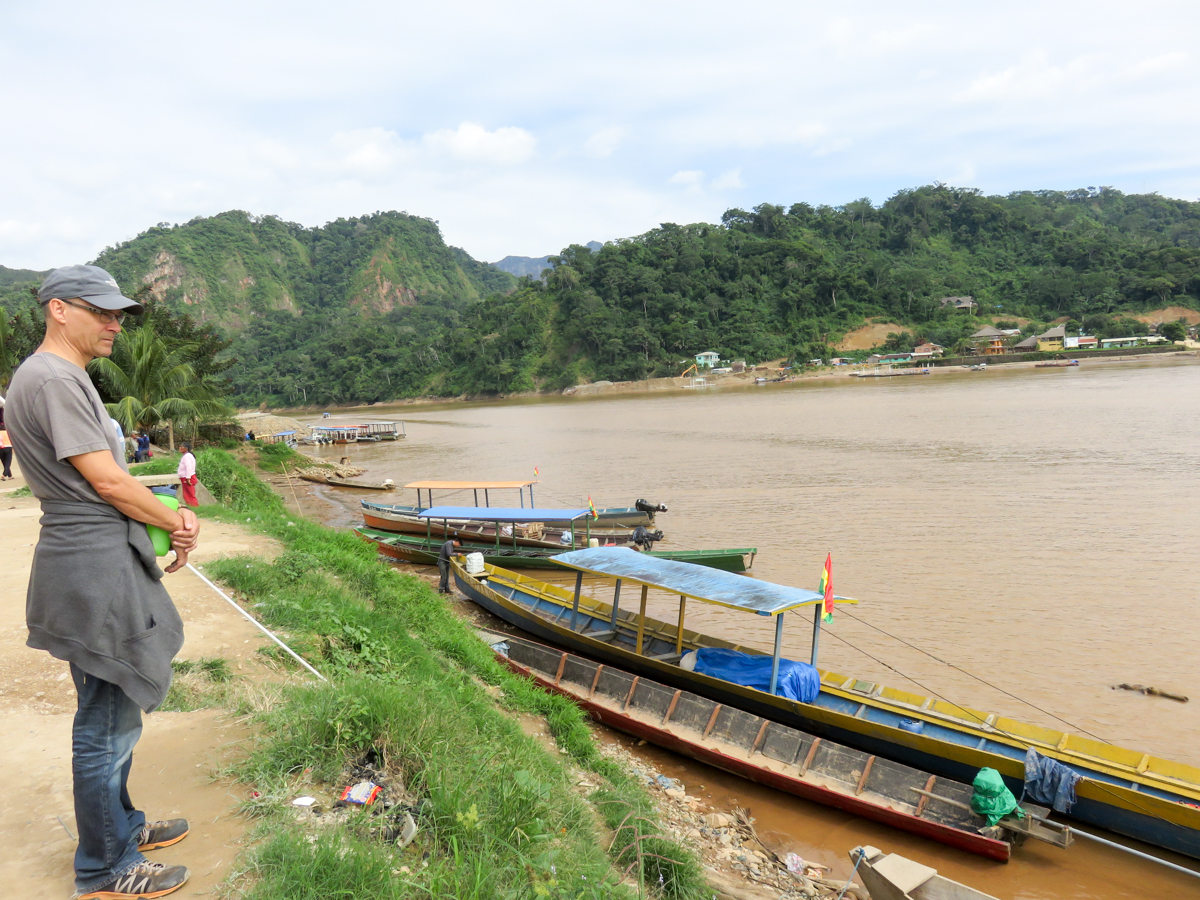

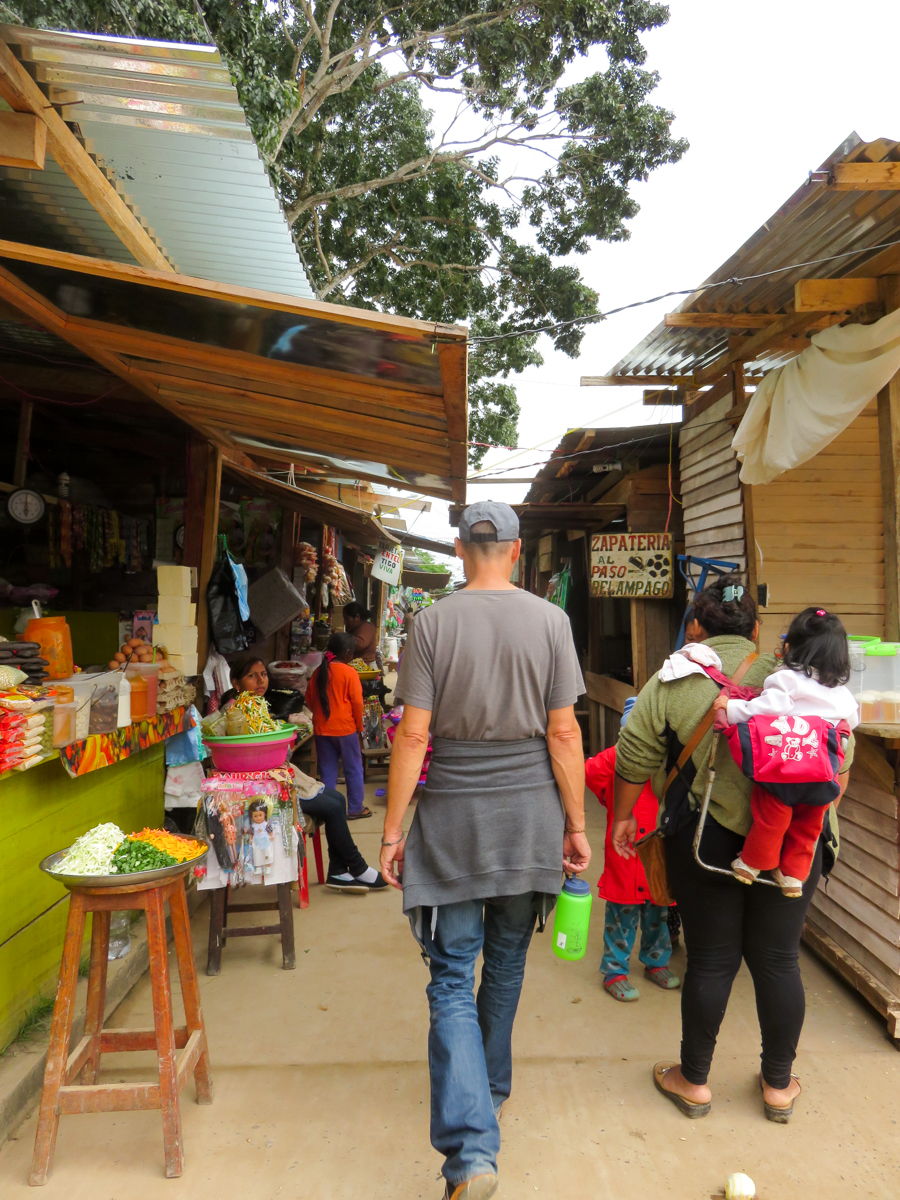
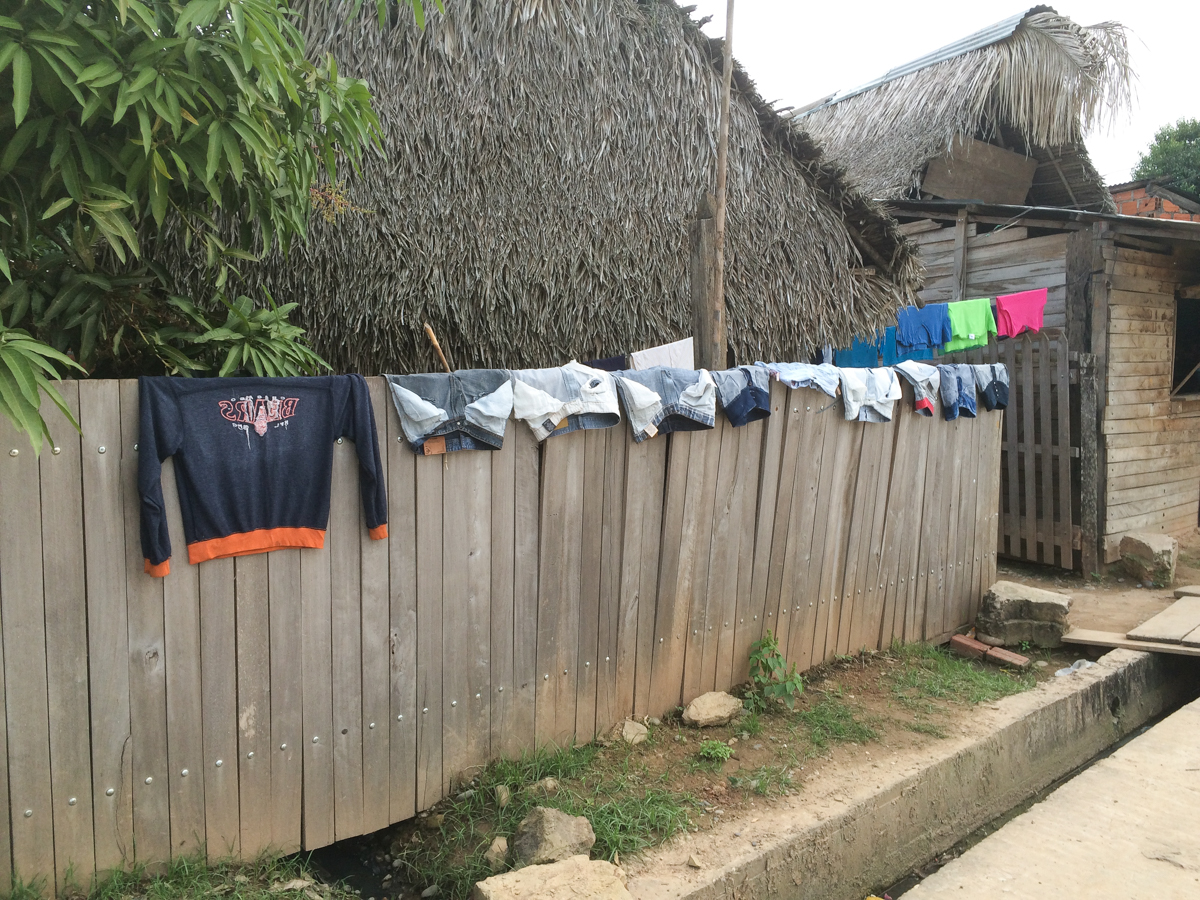
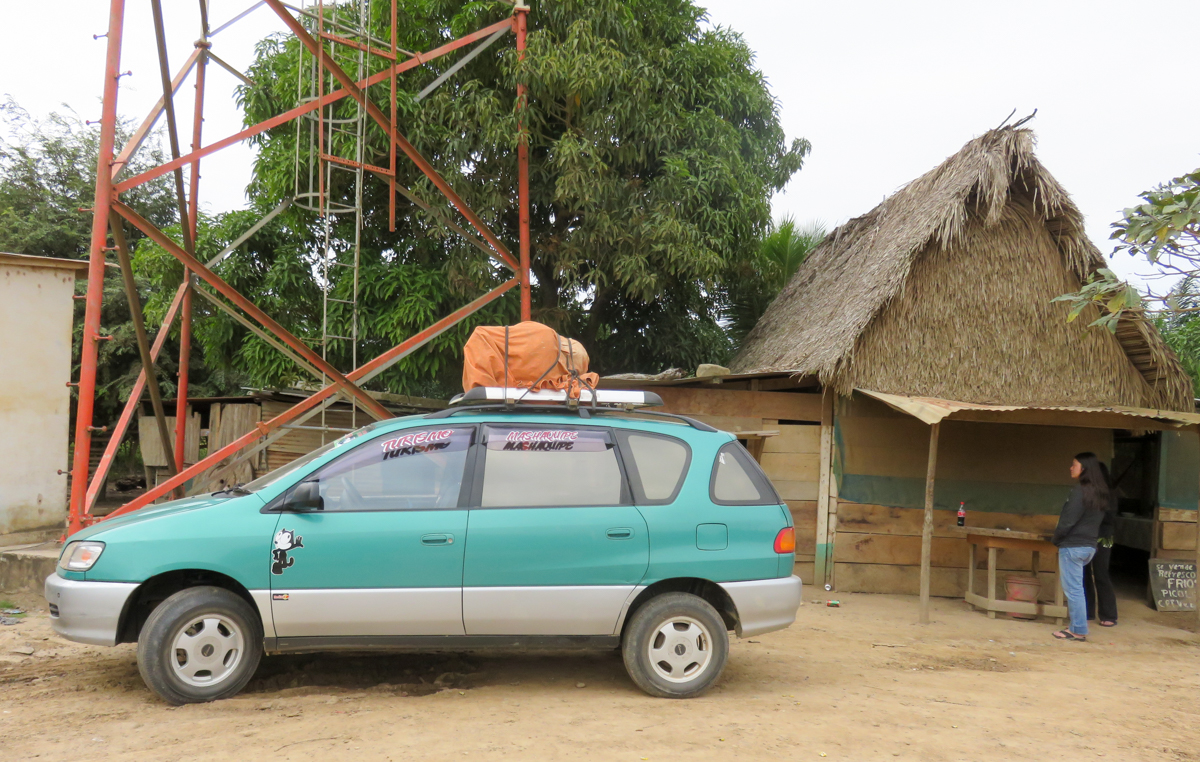
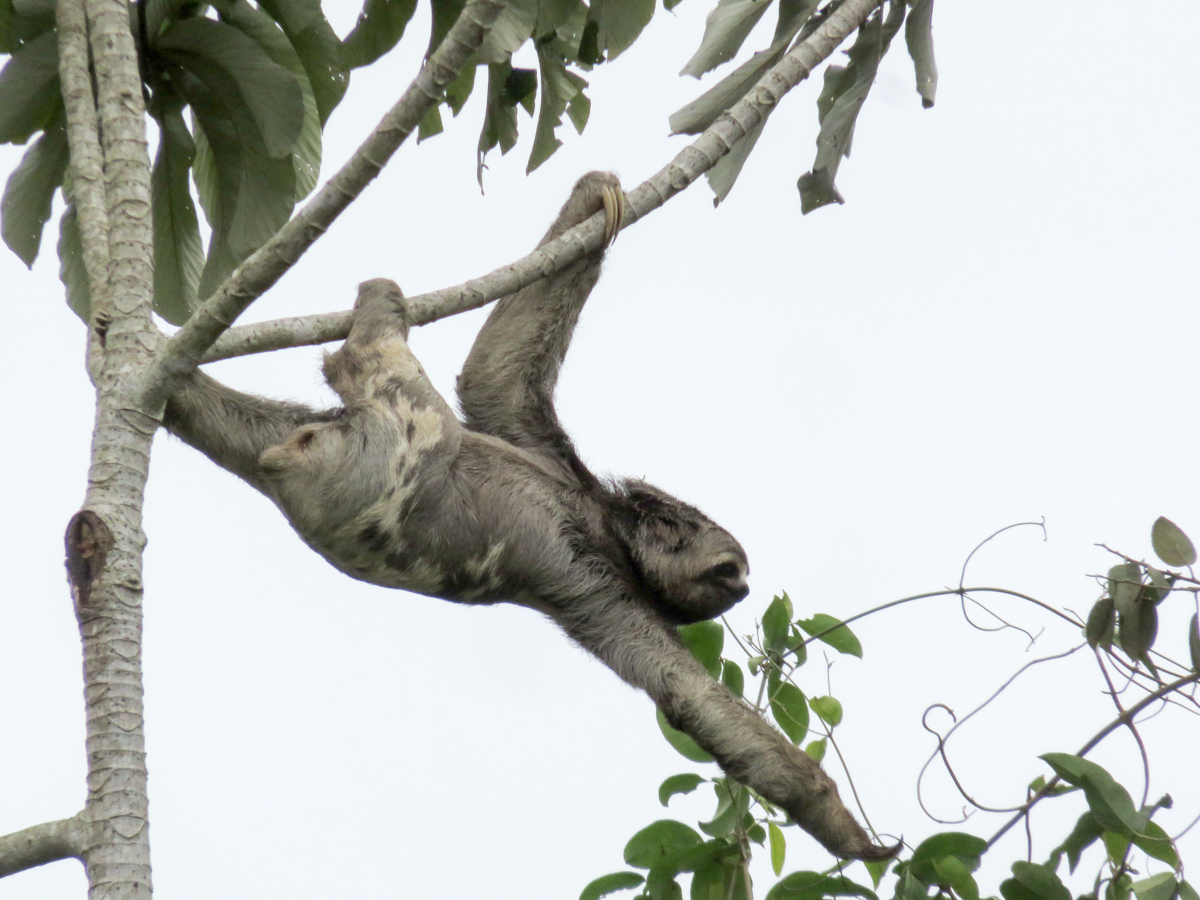
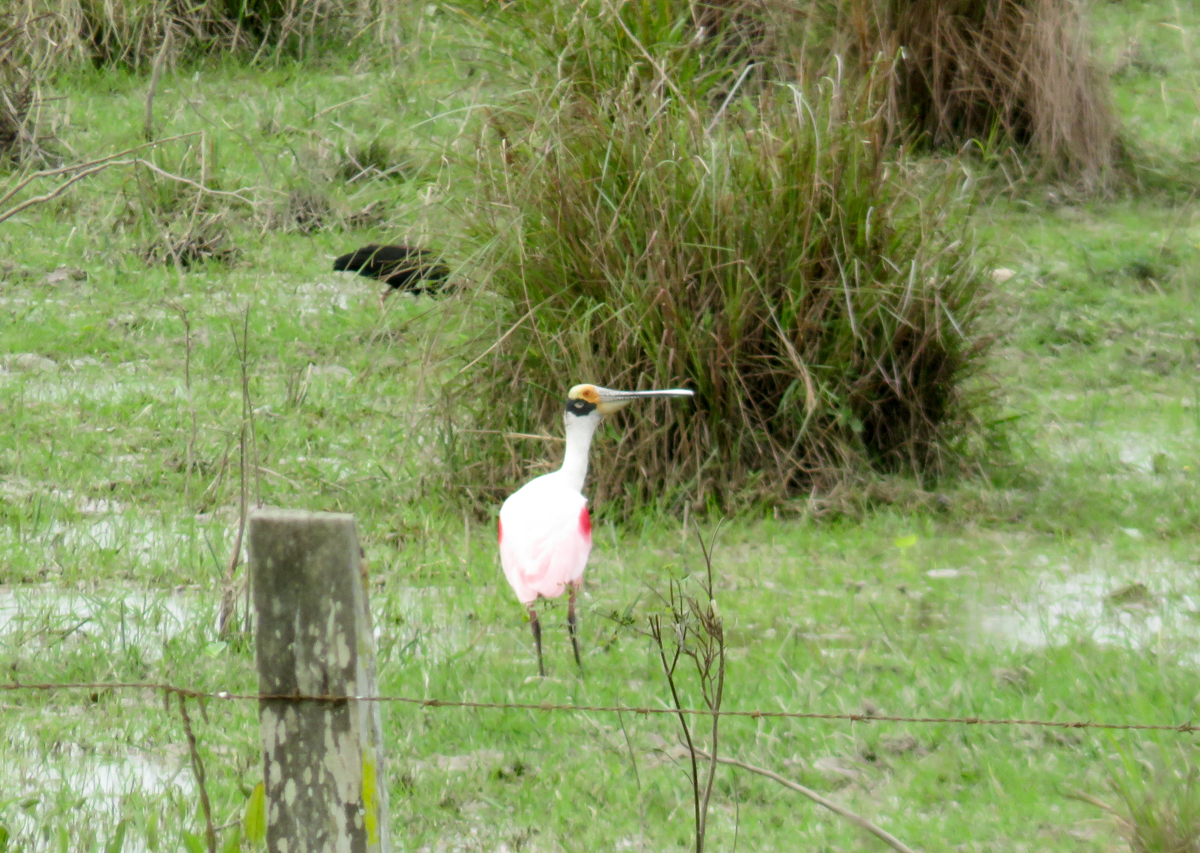
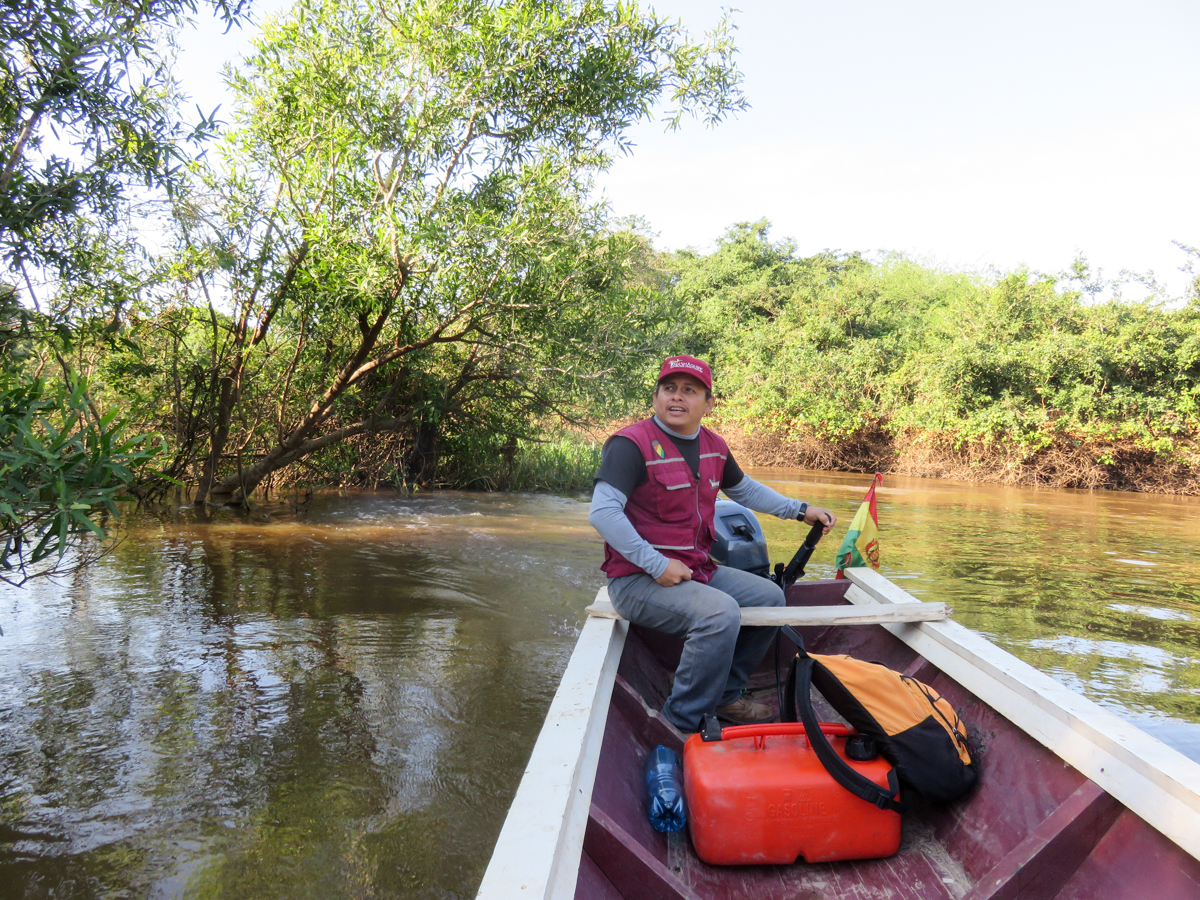
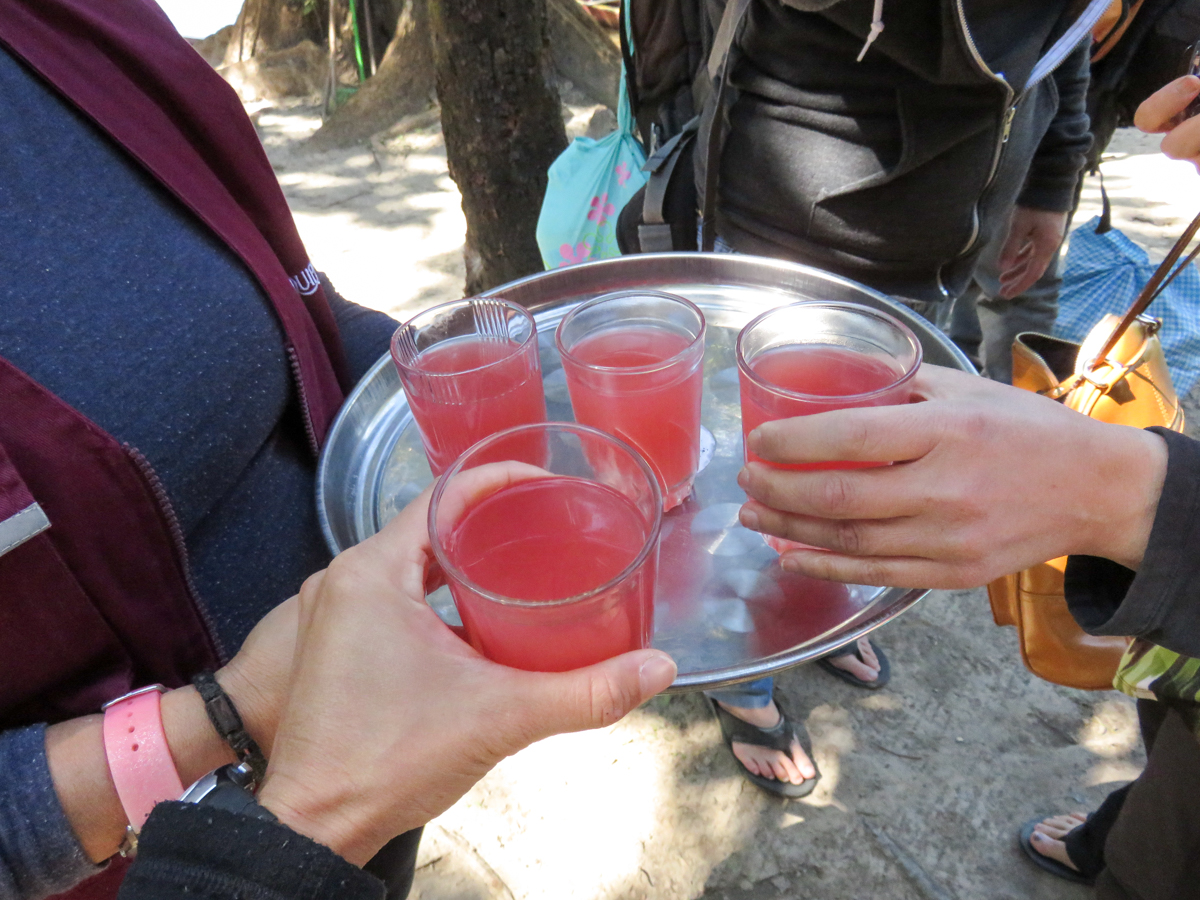
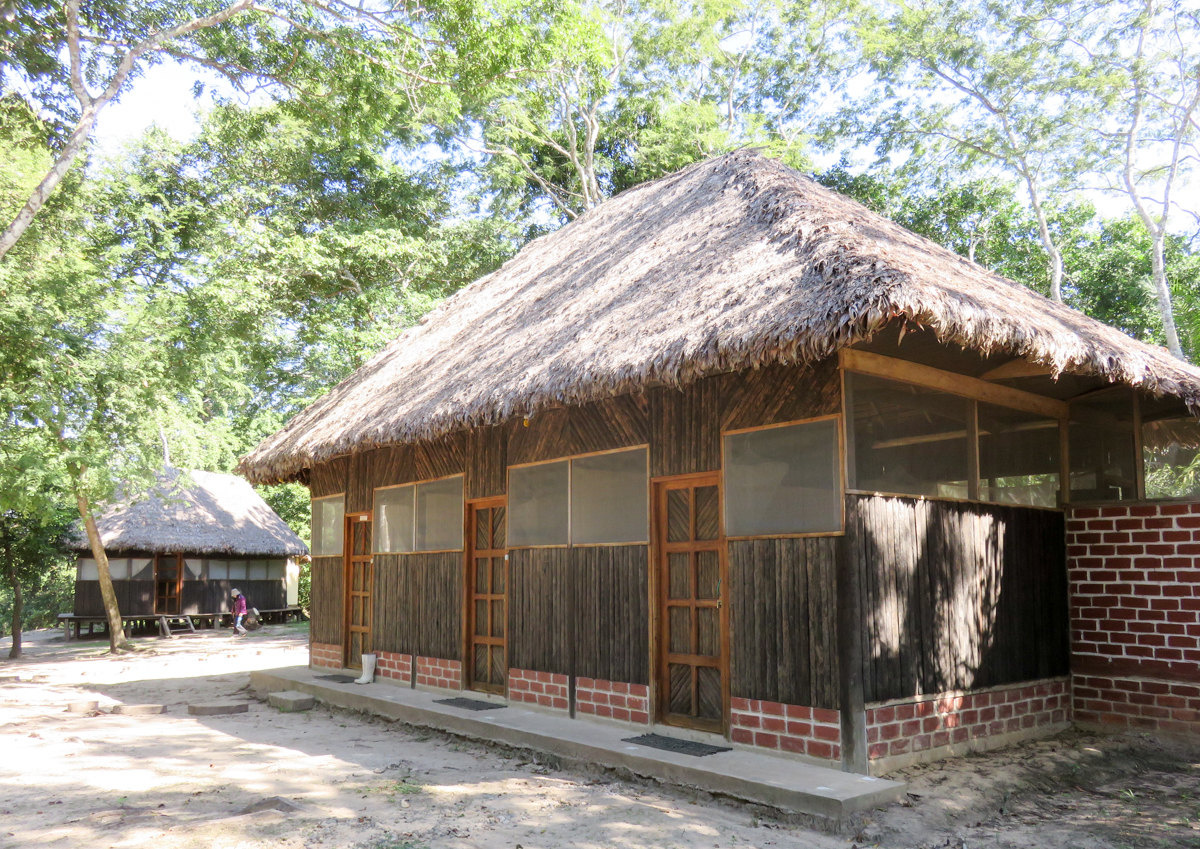

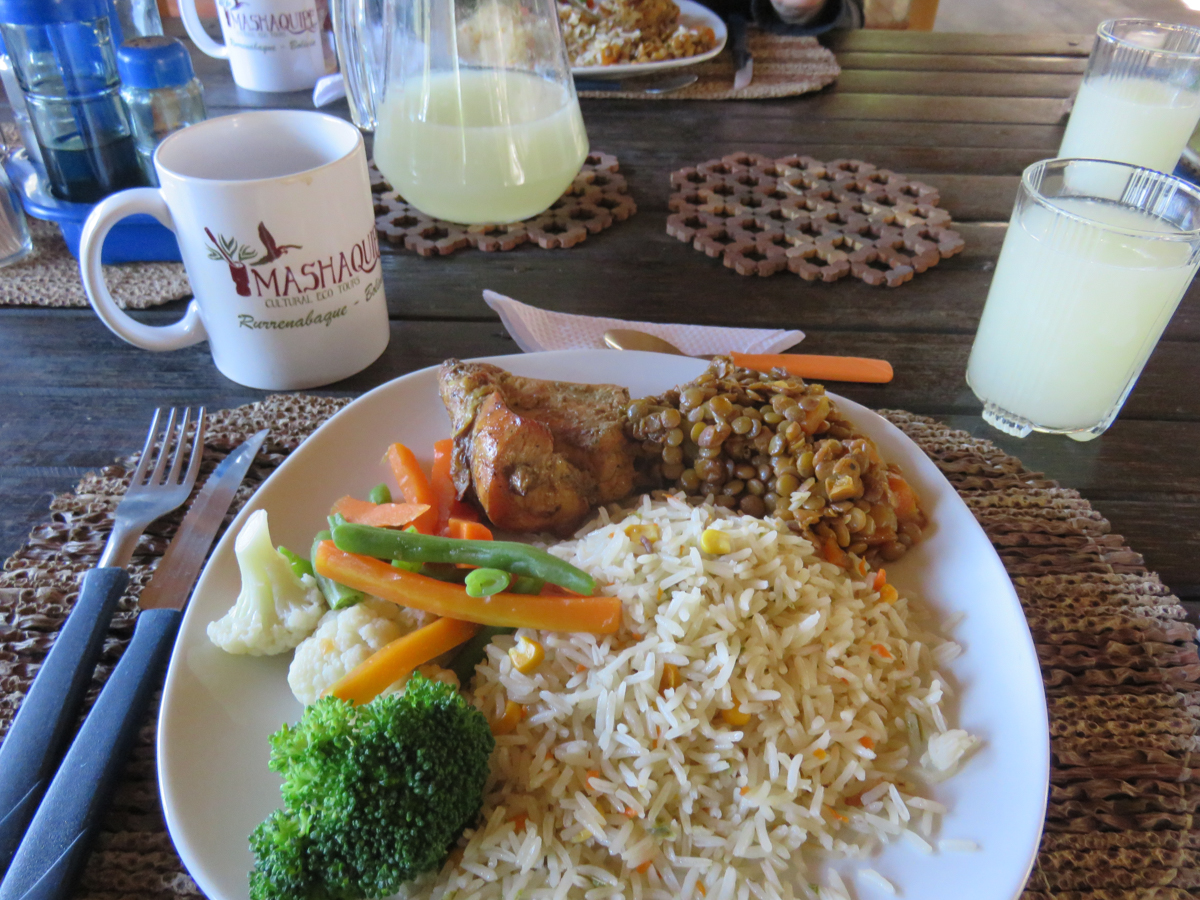

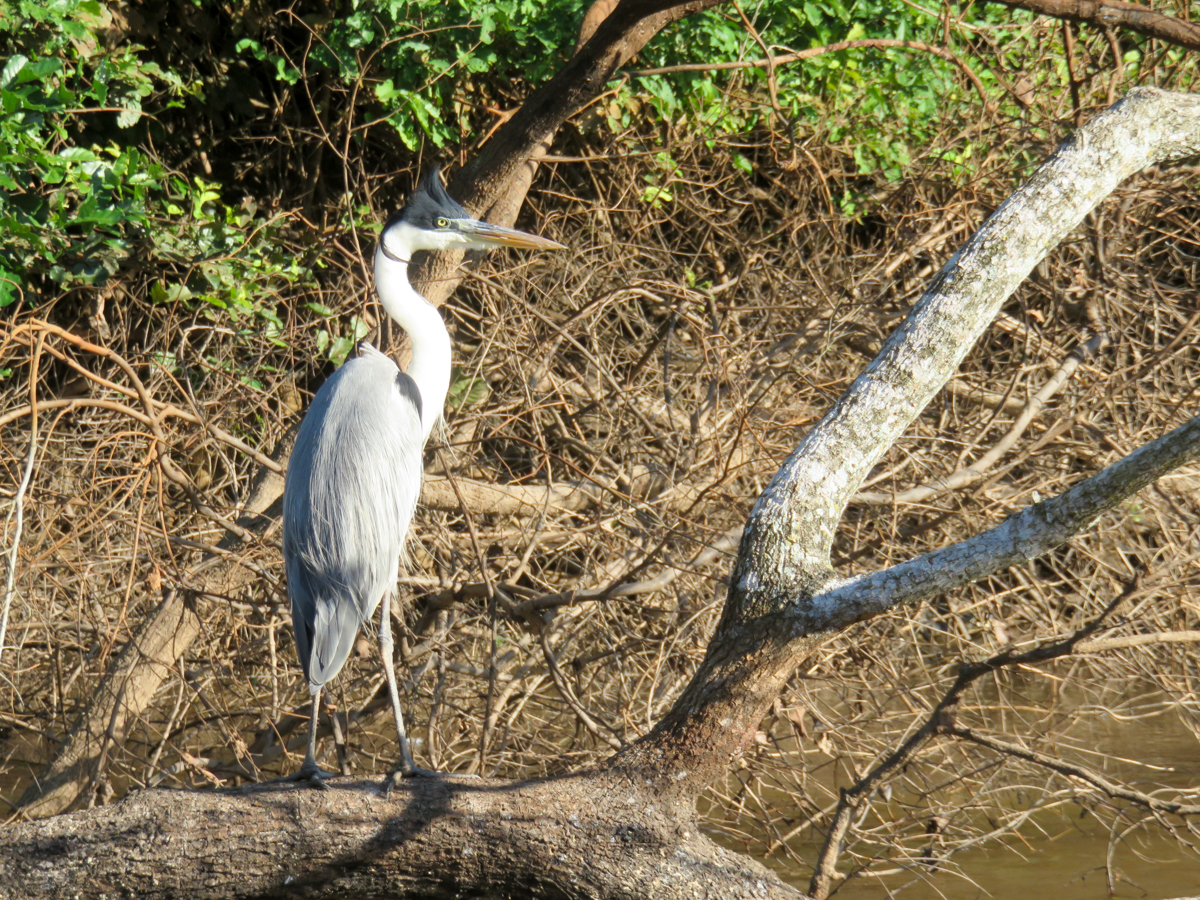
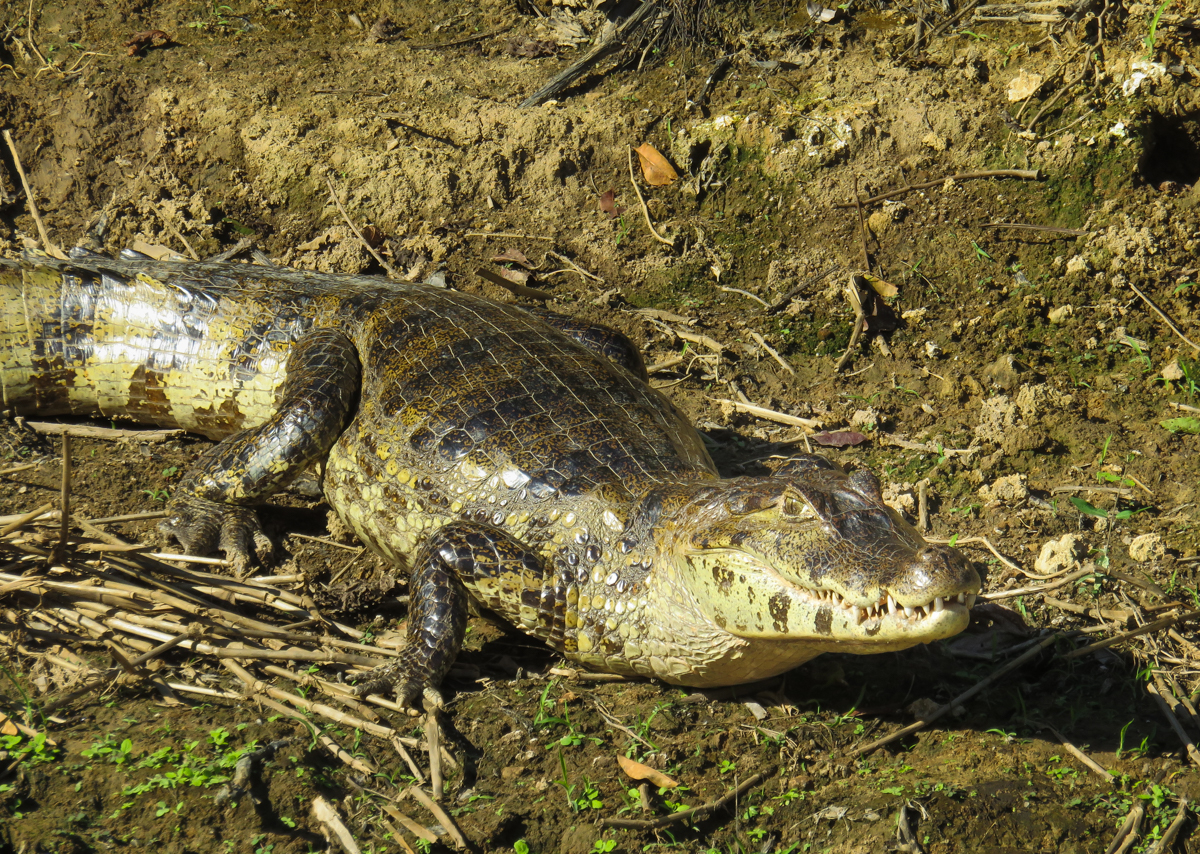




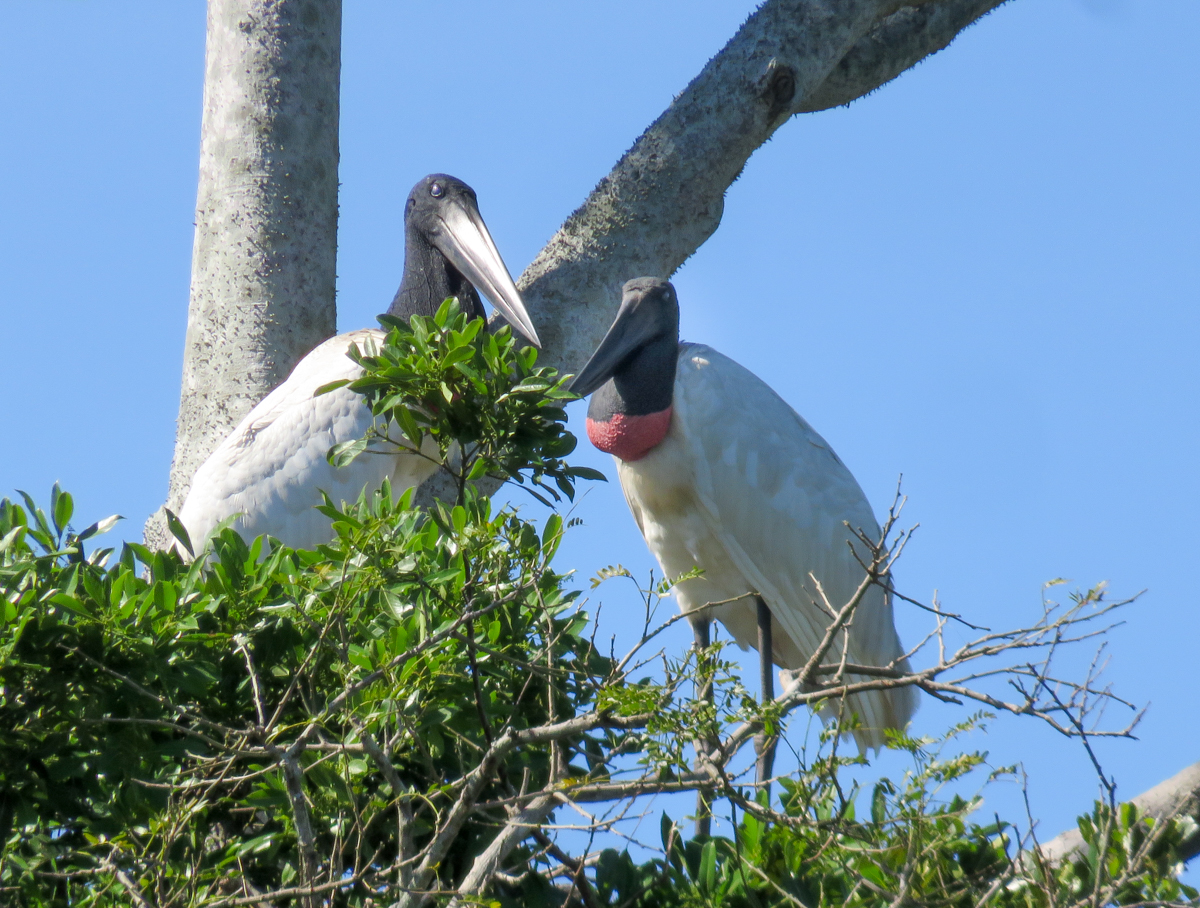

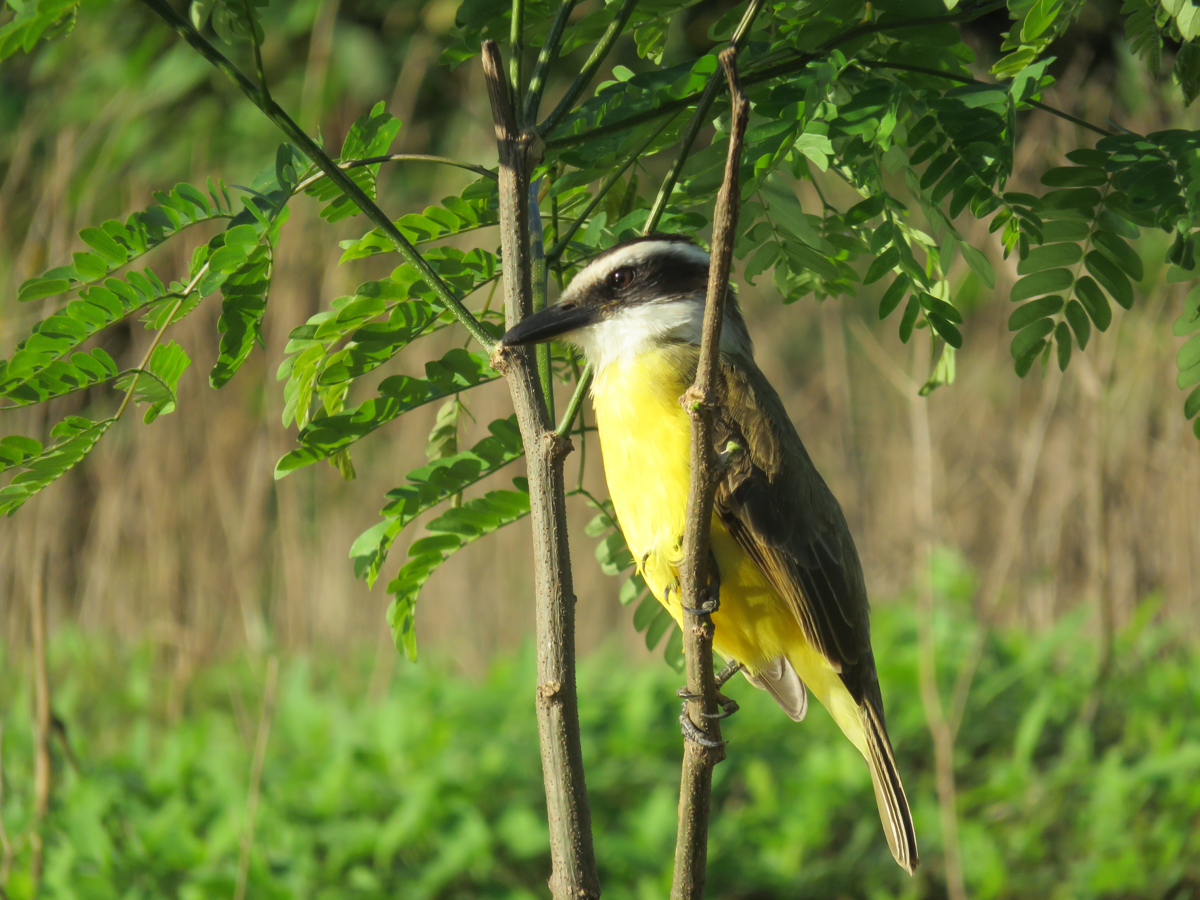
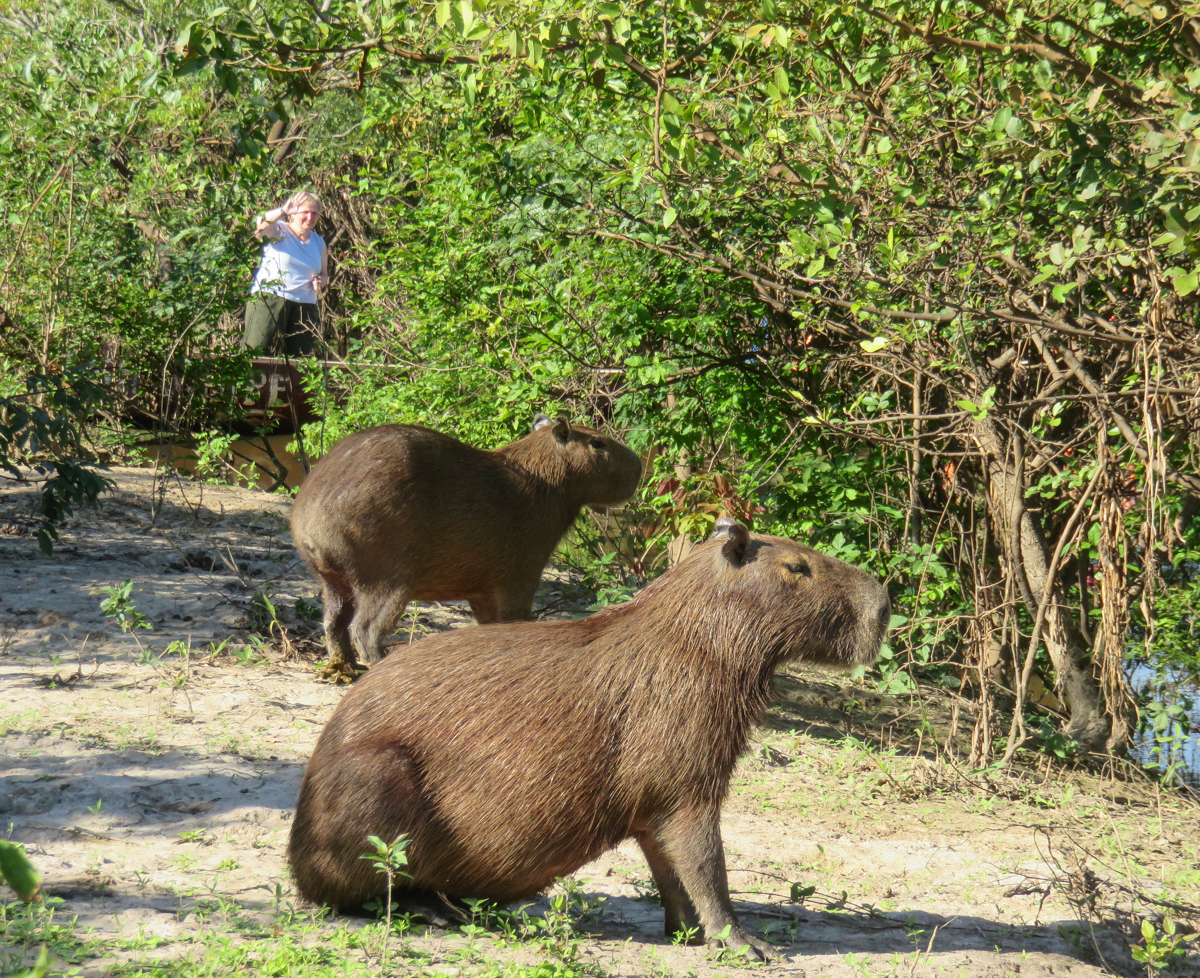
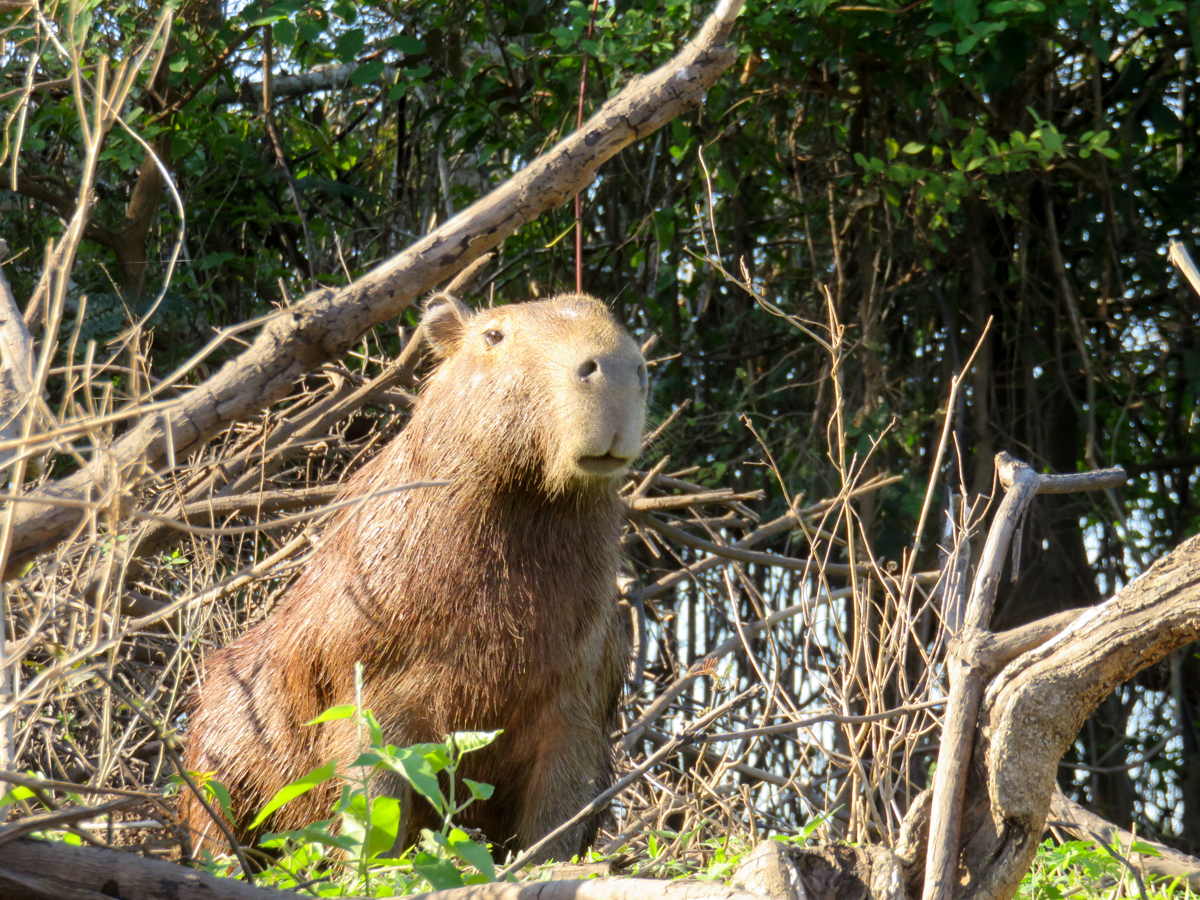

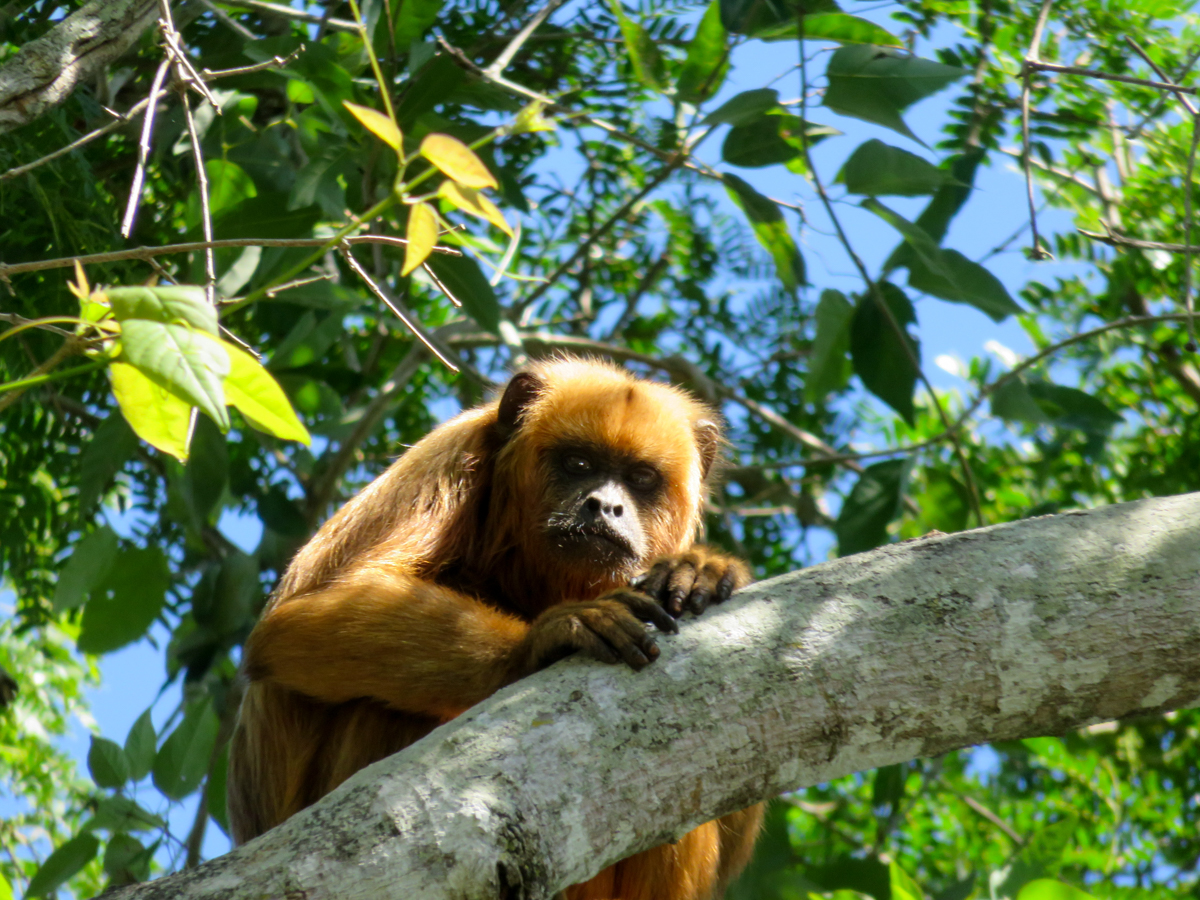
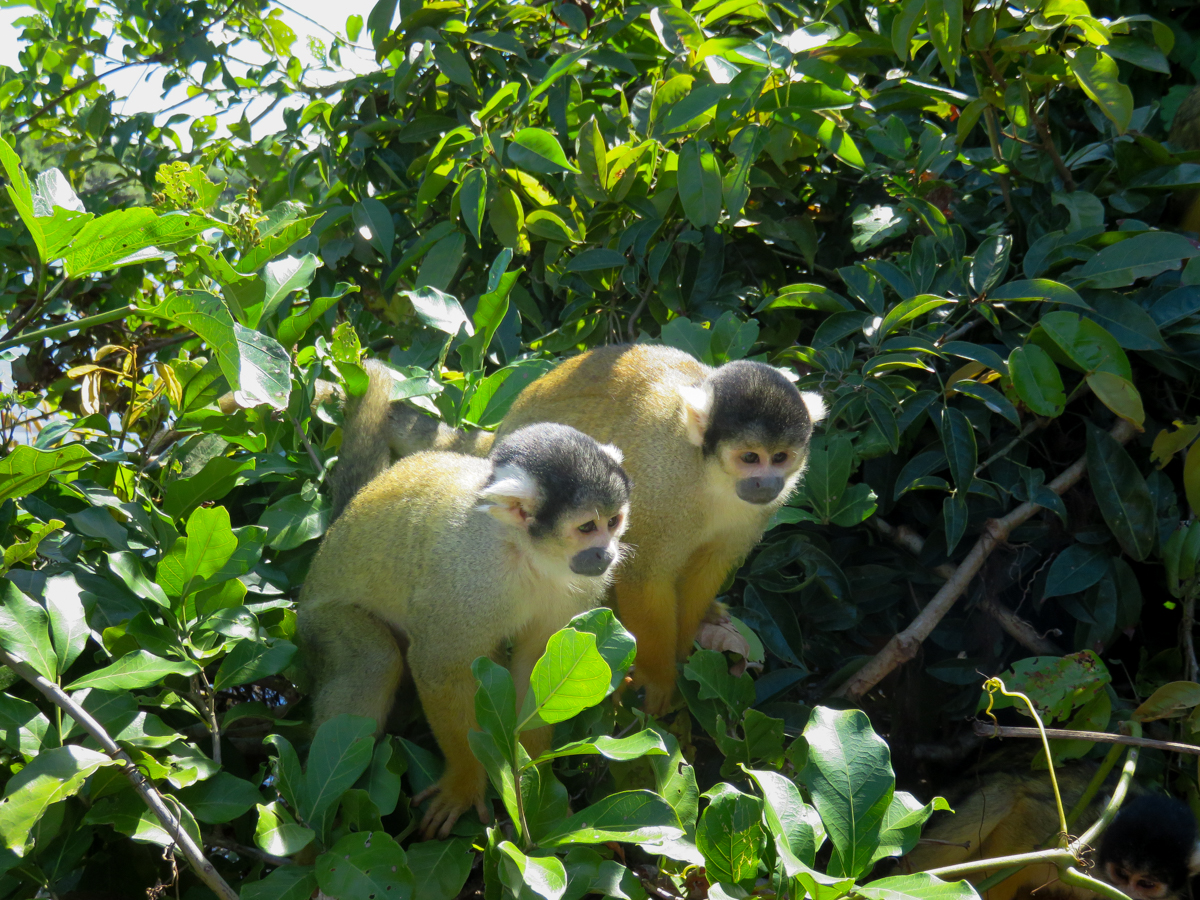
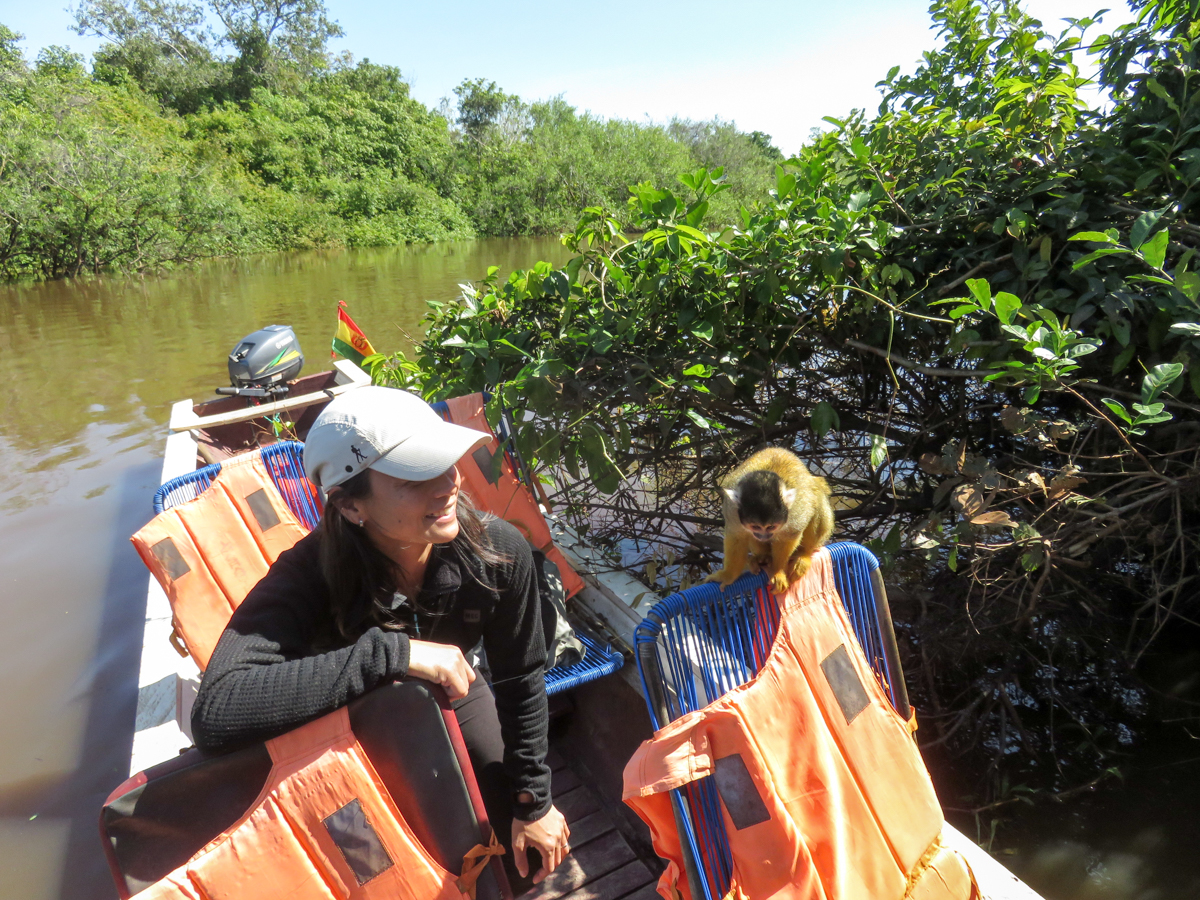
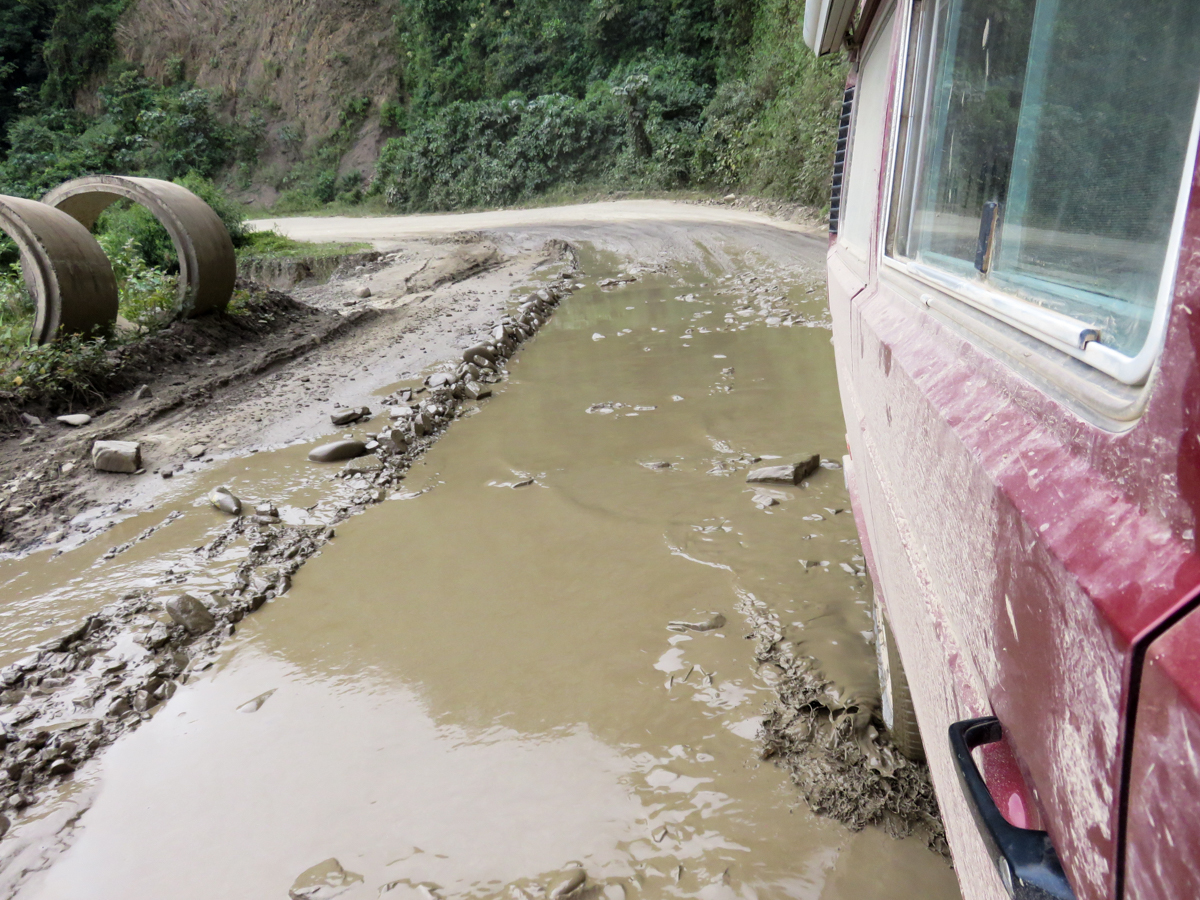
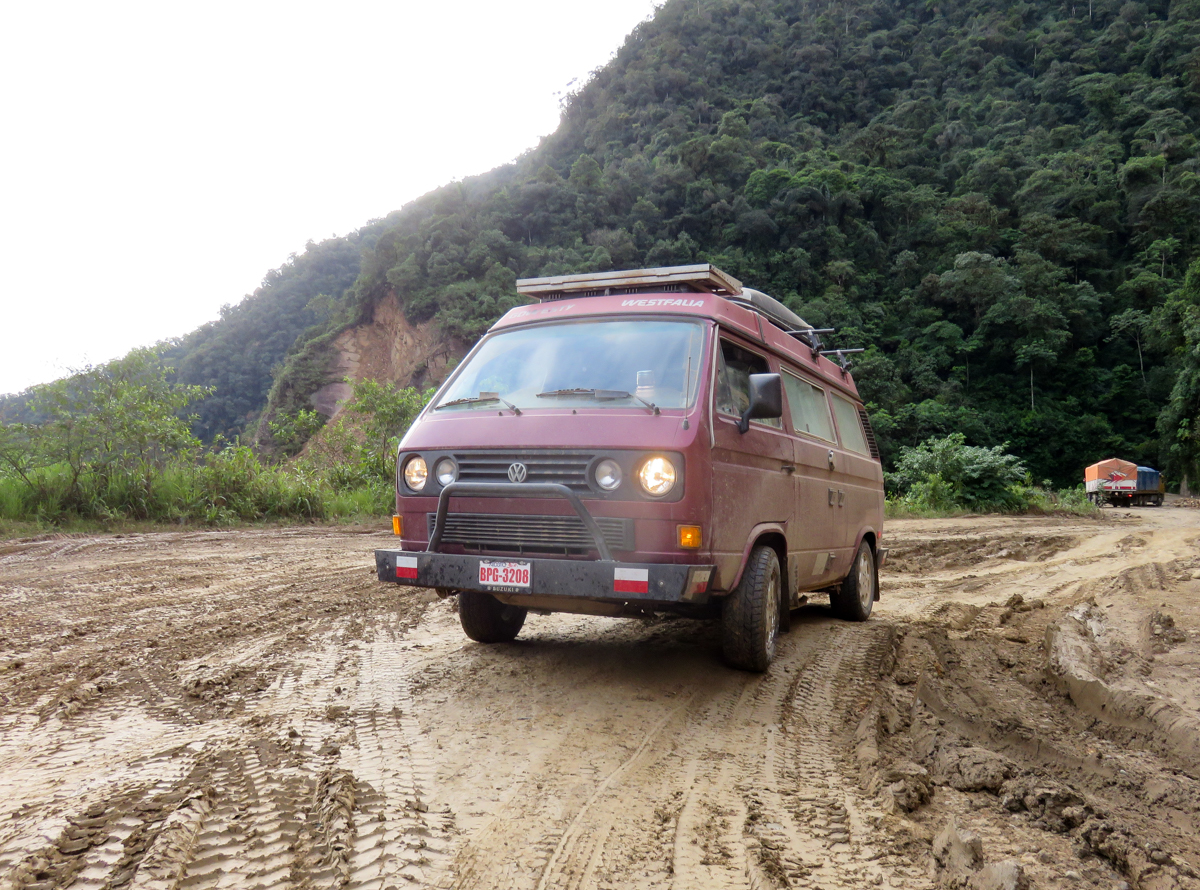
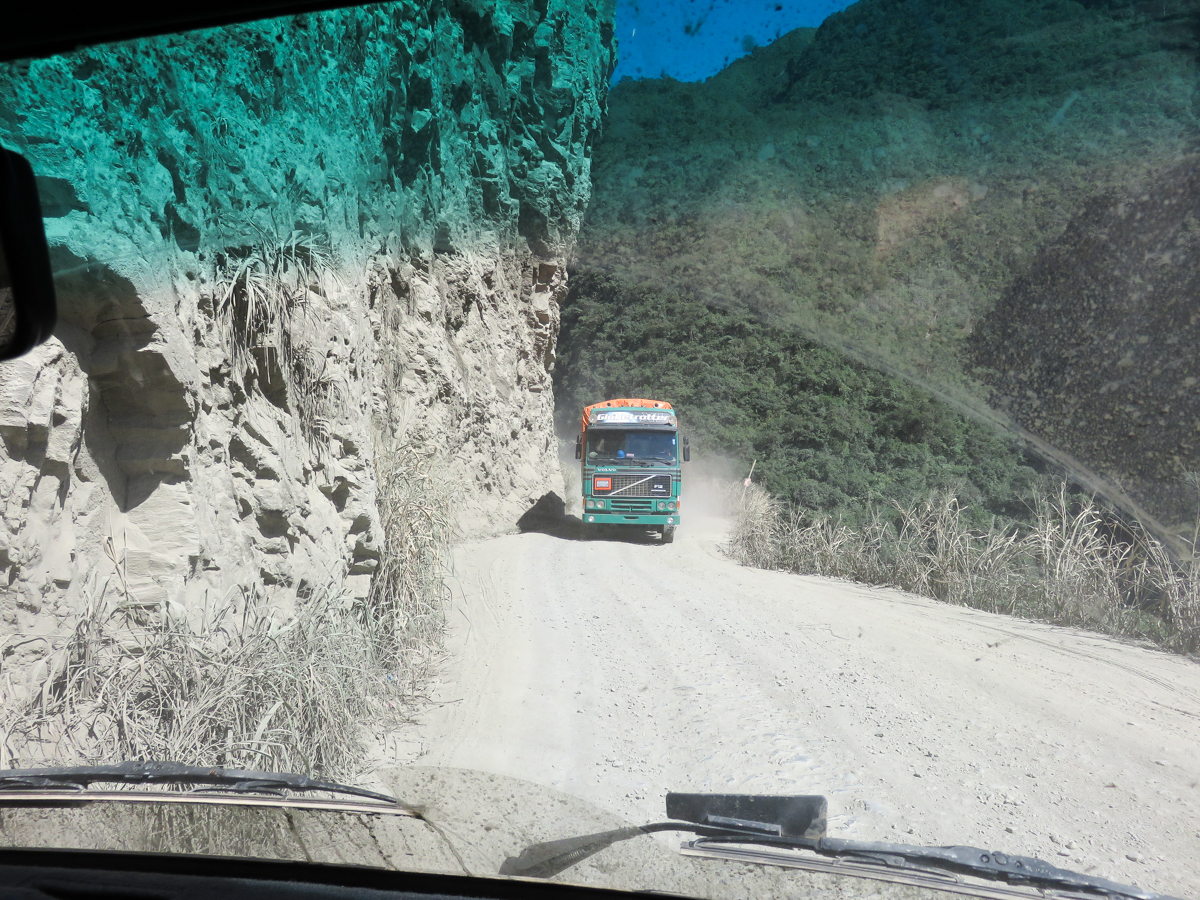
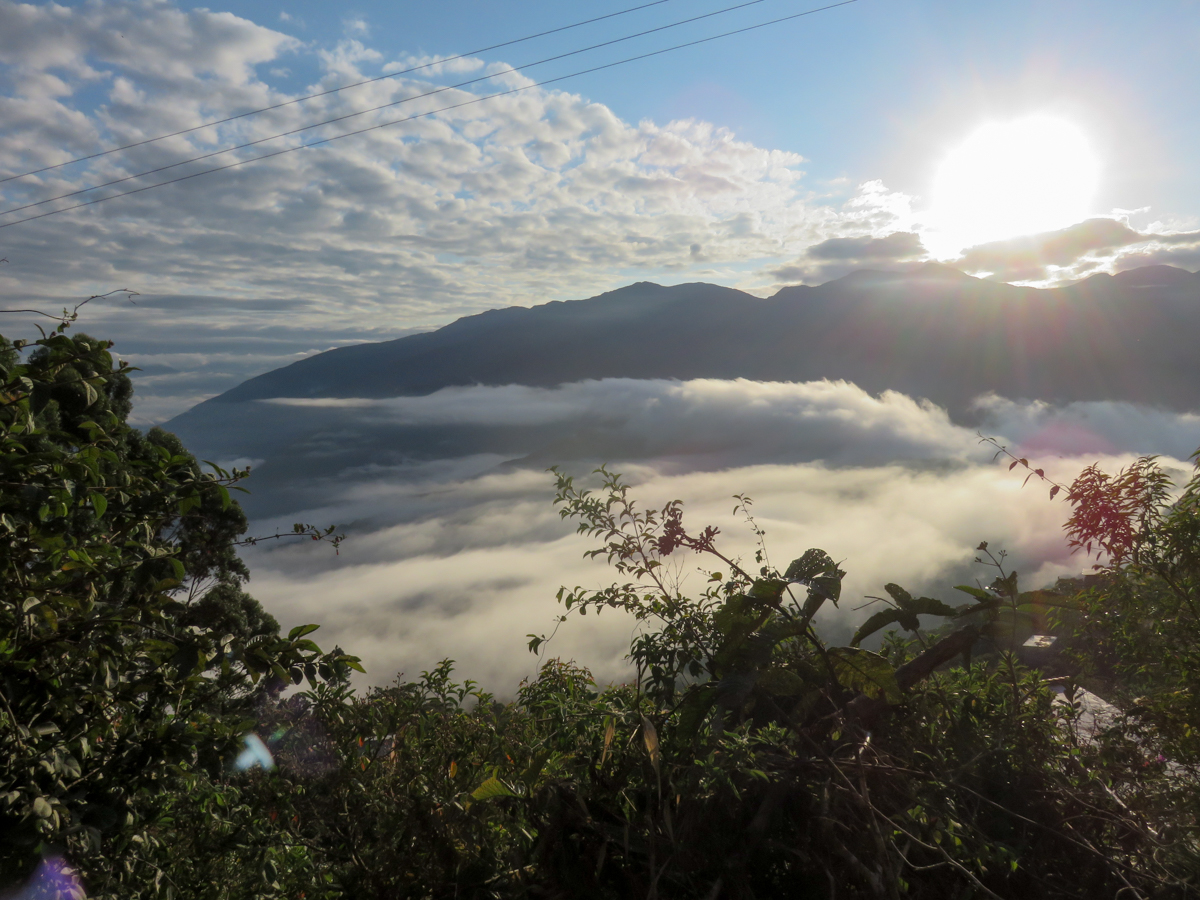
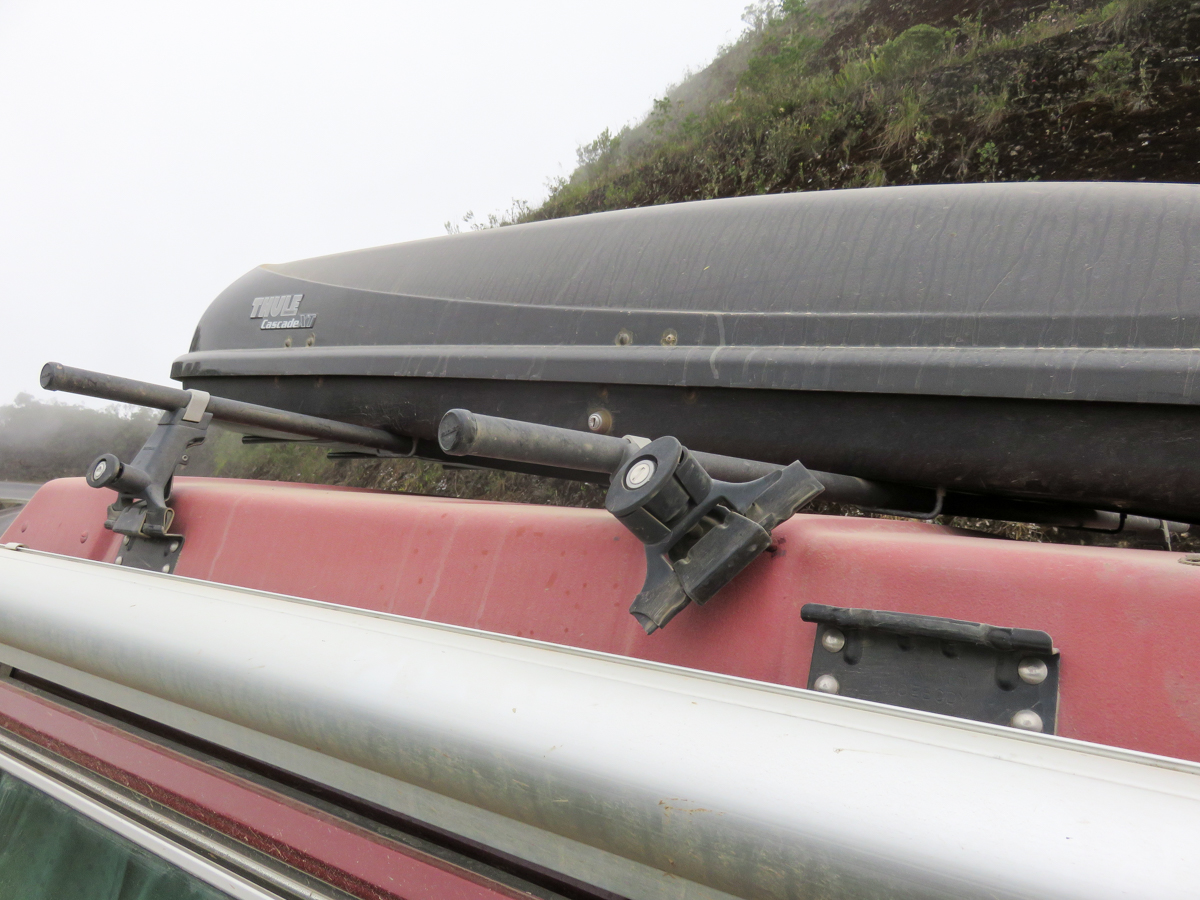
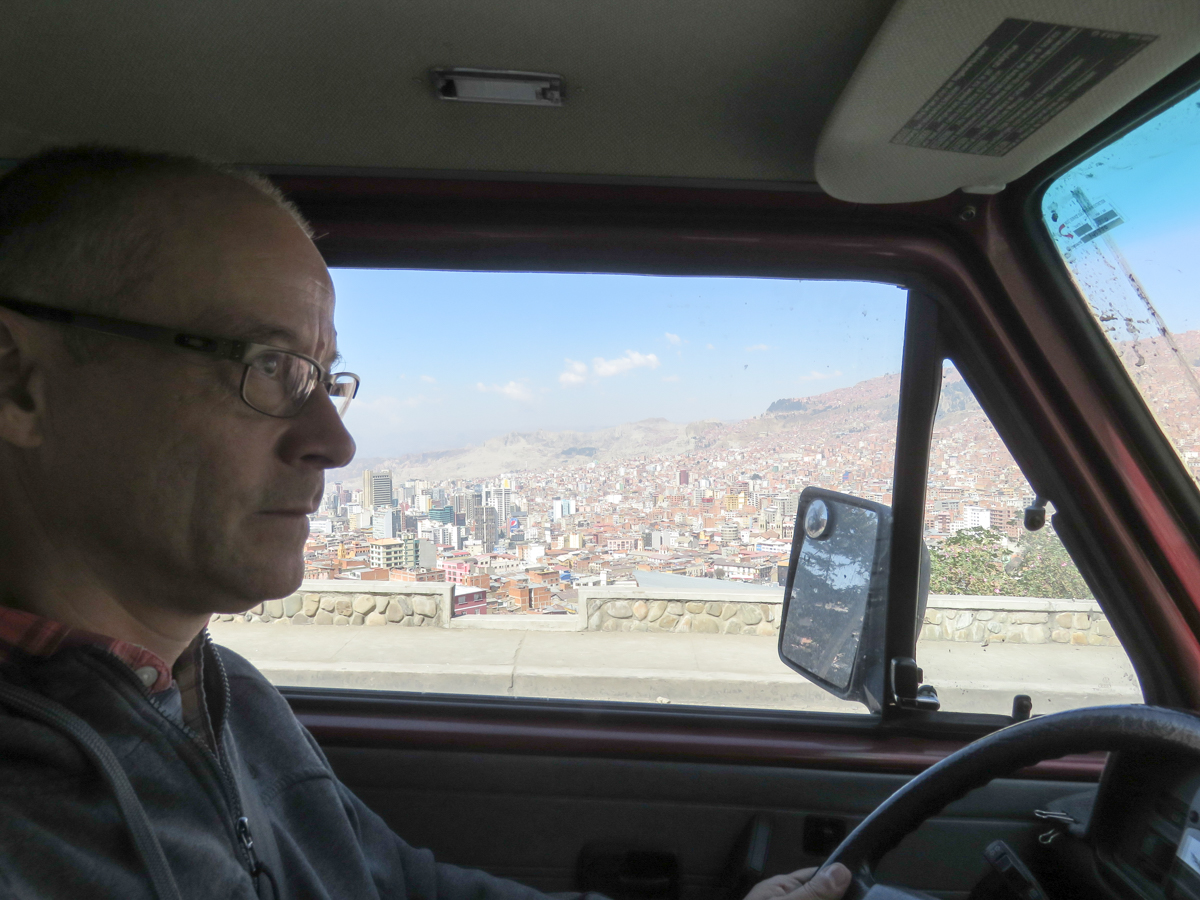
Wow Janice! Just when I think I have read your most horrendous road story, you come up with something to top it!
Great photos and narrative as always. The animals on your Amazon Basin tour were so unusual, it reminded me of the Galapagos Islands.
I am glad you and Gregor survived another adventure in one piece, and even seemed to come out the other side a bit stronger.
Safe travels (but not TOTALLY safe!). LOL
Love you guys!
Hey Ted, thanks for reading! It seems like the most challenging times make for good stories, but I really hope I don’t end up writing a more horrendous road story than this one. Seeing those funky-looking animals made it all very rewarding. In fact, the wildlife on this trip has made more of an impression on me than, say, the landscapes or culture. It reminds me that humans aren’t the only evolved species on this earth. Hope you and Cheryl are well. Miss you guys!
That is a HUGE effort for a pink dolphin. I would have done the same. See you crazy kids soon~ hugs, p&j
Sometimes when I think about the crazy-ass roads we take to get somewhere special, I just shake my head. Hugs back!
Hello Janice and Gregor!
That “road” seems to be a route only a geologist can truly appreciate.
My Masters in Geology definitely helped me to appreciate that road. I hope to never study a road like that ever again.
Those roads look terrible!!! Pretty pink dolphins though.. how could you pass that up!
I do not wish that road experience upon anyone else, but the pink dolphins and the wacky birds and the giant gopher were definitely worth it!
I loved the story. It seems like you guys are a rock together. Those roads sure can test a relationship!
You got that right! The road is kind of like a fun-house mirror – it reflects things (like relationships) in a whole different way. Sometimes scary, sometimes funny.
What a great story and I sure love the photos. The birds and those big rodents? Wow. I wonder “How can you ever go home after a trip such as this?” Keep it coming, please keep the stories coming. And the photos.
Thanks for following along, Bruce! We want to keep traveling like this as long as we can. It’s not always easy, but we see some amazing things. I’ll keep sharing!
As always, I love reading your stories. I always learn so much! I loved reading about all of the wildlife that you saw (and I had no idea that there were pink dolphins that swam in rivers – who knew??). I also appreciate your very candid description of the the journey to get there!
So glad you enjoyed reading it. It was one of our most memorable adventures, and I’m so happy that I got to see the pink dolphins before they disappear.